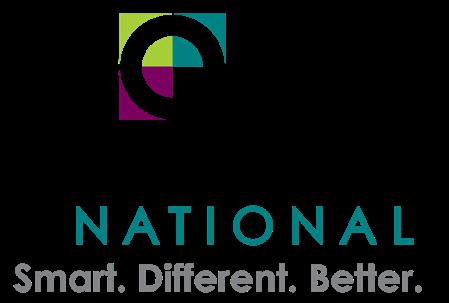





































































































October

Our Eagle One insurance policy is a hole-in-one when it comes to protecting your customers from hazards like weather, vandalism, mechanical breakdowns, and more. Our specialized coverages can help your customers avoid life’s sand traps. Trust in Tomorrow.® Talk to us today.
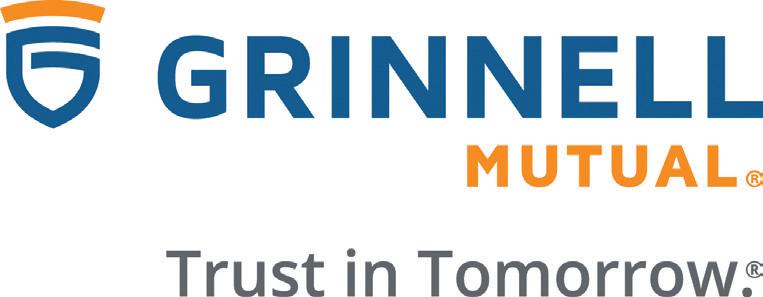





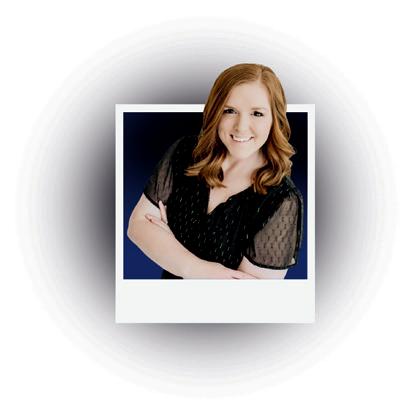





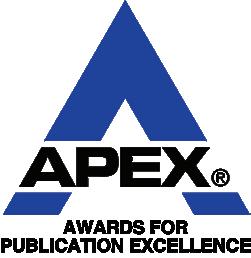
Chairman of the Board - Allyson Padilla allyson@blanksinsurance.com
President - Patrick Taphorn, CIC, CSRM ptaphorn@unland.com
President-Elect - Thomas Evans, Jr. tom.evans@assuredpartners.com
Vice President - Chris Leming cleming@troxellins.com
Secretary/Treasurer - Cindy Jackman, CIC, CISR cjackman@arlingtonroe.com
IIABA National Director - George Daly george.daly@thehortongroup.com
Mohammed Ali - mali@aliminsurance.com
Charles Hruska, IV - chas@hruskains.com
David Jenk, Esq. - djenk@nwibrokers.com
Rebecca Kohn - rkohn@worthyinsurance.com
Lindsey Polzin - lpolzin@presidiogrp.com
Ray Roentz - ray.roentz@hwcrins.com
Noele Tatlock - ntatlock@unland.com
Luis Tayahua - lt@goldenowlinsurance.com
Sharon Waldvogel - sharon@infinitybrokersinc.com
Andrea Wallace - andreaw@powersinsurance.com
Amiri Curry - acurry@assuranceagency.com
Kevin Lesch - klesch09@gmail.com
Jeff McMillan - jeff@mcmillanins.com
James Sager - james@sagerins.com
Luke Sandrock, CIC - lsandrock@2cornerstone.com
Budget & Finance | Cindy Jackman, CIC, CISR cjackman@arlingtonroe.com
Education | Lisa Lukens salibainsurance@gmail.com
Farm Agents Council | Steve Foster s.foster@ciagonline.com
Government Relations | Dustin Peterson dustin@peterson.insurance
Planning & Coordination | Nick Gunn, CIC ngunn@envisionins.com
Technology | Brian Ogden brian@ogdeninsurance.com
Young Agents | Cody Imming cody@imminginsurance.com
Follow us on socials.
Director of Information and Technology
Director of Education and Agency Resources
Accounting & Admin Services
Director of Human Resources, Board Admin
Sr. Vice President/Chief Financial Officer
Chief Executive Officer
Director of Membership Services
Director of Government Relations
Office Administrator
Director of Communications
Marketing Representative
Shannon Churchill (217) 321-3004 - schurchill@ilbigi.org
Brett Gerger, CIC (217) 321-3006 - bgerger@ilbigi.org
Tami Hubbell, CIC (217) 321-3016 - thubbell@ilbigi.org
Jennifer Jacobs, SHRM-CP (217) 321-3013 - jjacobs@ilbigi.org
Mark Kuchar (217) 321-3015 - mkuchar@ilbigi.org
Phil Lackman, IOM (217) 321-3005 - plackman@ilbigi.org
Lori Mahorney, CISR Elite (217) 415-7550 - lmahorney@ilbigi.org
Evan Manning (217) 321-3002 - emanning@ilbigi.org
Kristi Osmond, CISR Elite (217) 321-3007 - kosmond@ilbigi.org
Rachel Romines (217) 321-3024 - rromines@ilbigi.org
Tom Ross, CRIS, CPIA (217) 321-3003 - tross@ilbigi.org
Carol Wilson, CPIA (217) 321-3011 - cwilson@ilbigi.org
Raise your hand if you only take continuing education (CE) just because it gives you credits towards your state-required hours for licensing requirements.
Those of you with your hands raised, I am very disappointed in you, and I have failed you. Any education you take should provide you, and most importantly, your clients, with value.
Remember, you are what you eat. Snacks and sweets represent the 21-hour self-study course that will help you meet your state minimum requirements. While it will satisfy a requirement, it will not satisfy a need. Organic and healthy food represents designation CE that will help fulfill your State CE requirement while satisfying an educational need. It’s when you take educational classes that may not provide CE that you truly grow and fulfill all of your educational needs, providing the ultimate value to your clients.
As with everything in life, the best parallel is an apt sports analogy. Education is training for your career, while practice is training for your sport. If you just put in the practice time for a sport, what everyone does, you should expect the results that everyone expects. This would be doing your state-required 24 hours of CE every two years. We have all had good coaches (I hope) and bad coaches (guaranteed). Liken a bad coach to taking the 21-hour self-study plus 3 hours of ethics. It’s the minimum, so you should expect results (losing) that match your effort (minimum).
Liken a good coach to taking designation courses that will increase the likelihood of better results (winning occasionally) that match your effort (elevated). Neither a good nor a bad coach will produce a consistent winner (excellent agent). If you put in the effort that everyone else does, you should expect to be like everyone else (below average to average). Coaching is the equivalent of the provider of education that you choose. Some 21-hour books may produce decent content (our 21-hour book), and others provide lackluster education, so there are different levels of bad coaching. Some designations are much better in terms of the content and material that they provide, which creates different levels of good coaches.
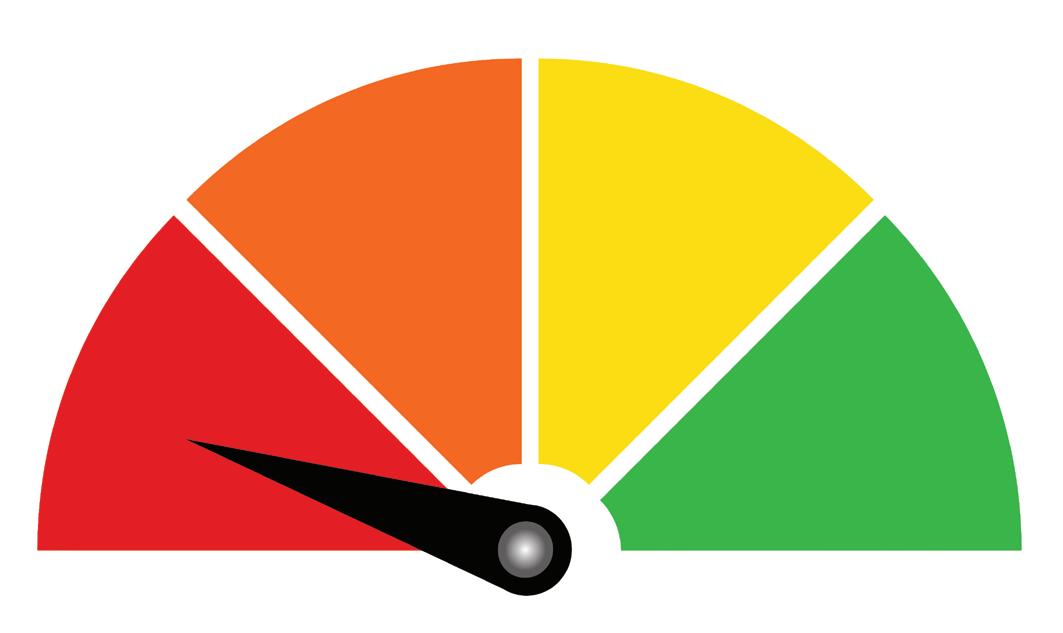
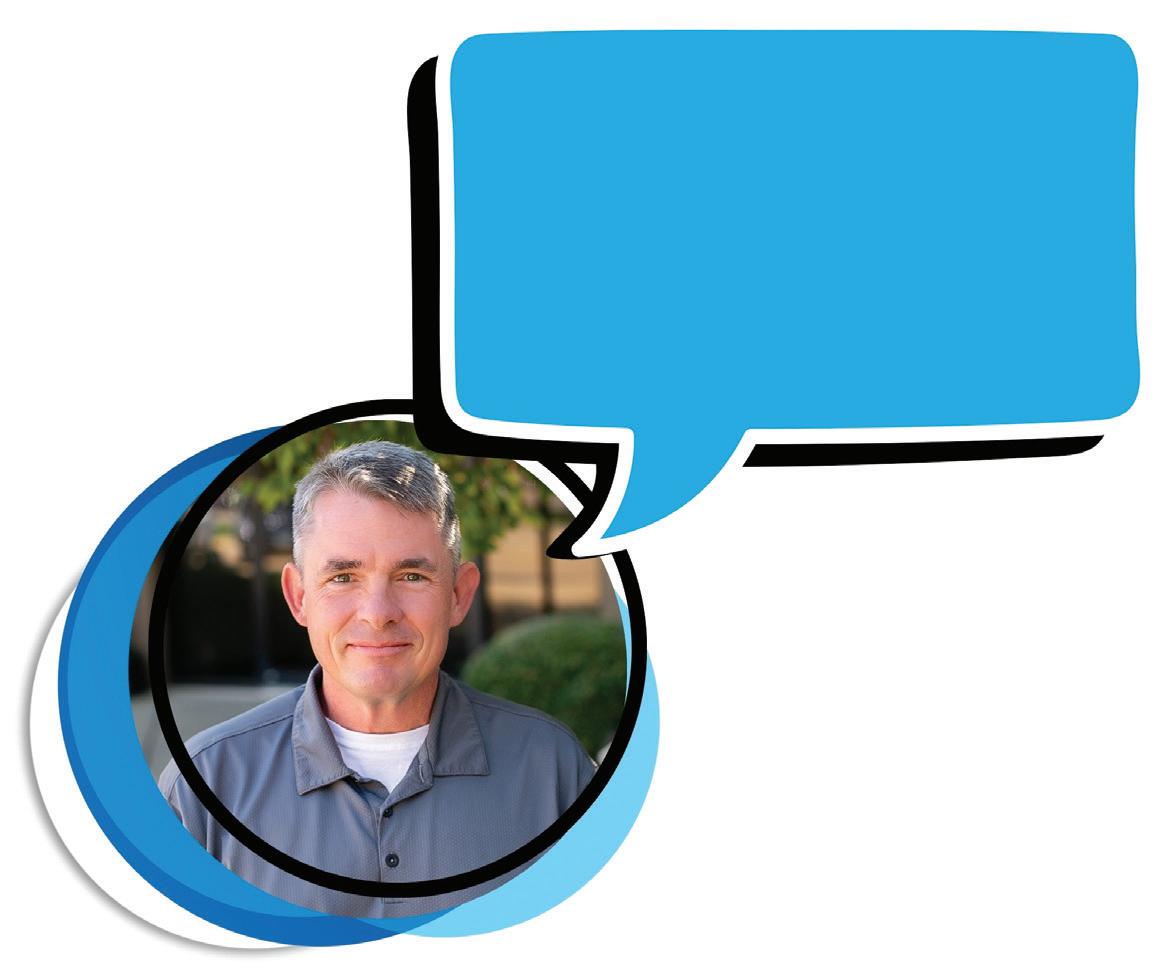
At the end of the day, you will still be average at best in your profession. Don’t get locked into the mindset that you know an agent who does extremely well financially and does the bare minimum. I would bet that they are working harder than you can imagine, especially if they have sustained success. Short found success is easier and can go quickly, while sustained success is earned through hard work and education. I would define success as well-protected and informed clients rather than money, as money will come with well-protected and informed clients.
So how do you become an above-average to excellent agent? Take education classes based on the content and quality of the provider, rather than the fact that you receive CE credits. As in sports, it’s the extra time that you put in that counts. Everyone puts in the practice time, it’s the extra hours that make you great. Michael Jordan would come two hours early to practice and stay two hours late. He was never satisfied with results, and the only way to produce better, sustainable results was to put in extra time. Now, just putting in extra time doesn’t guarantee better results. You need to work on your weaknesses and strengthen your strengths. For example, I am really good at base running and could use some work on recognizing and hitting the curveball. I wouldn’t want to spend two hours on hitting fastballs in the cage and running bases for different game scenarios.
Education-wise, it would be like being knowledgeable in workers’ compensation insurance but needing work on business income and spending four hours of a class covering workers’ compensation scenarios. So, if putting in extra work doesn’t educate or broaden your knowledge of relevant products, it doesn’t further your success. You need to take courses that broaden your knowledge base and create value for your clients. Try to have at least 75% of your extra education in topics that take a deeper dive into coverage aspects or sales techniques, and the remaining 25% can be towards a designation or other endeavor that may or may not offer you CE. This is the road to excellence, and remember
that the most important aspect is a quality provider. For instance, the association has two great resources for education without CE. First, Insurance Journal – Academy of Insurance (350+ courses) training, which provides the deepest of dives into a wide array of products and topics. Second, My Agency Campus – New Hire Training (amazing content). Get details on both at ilbigi.org/education.
You have to ask yourself: do you want to be Jordan or a bench player on your 6th-grade middle school team, or anything in between? Your effort will determine where you land. Anyone commanding a room at a conference or the are top in their field is most likely doing education without concern for CE, or their support staff is, and those muddling along are doing the bare minimum. For those bare minimum people, you have
two choices: our 21-hour self-study book (ilbigi.org/self-study) or a bare minimum option that includes great quality and content (and the best choice): CONVO 2025. Actually, this event, October 7-9 in Peoria, is more than bare minimum, as it will provide quality in-person education on timely topics with your peers while providing CE credit. My educational plan would be to attend CONVO every year and the Academy of Insurance membership, so that all of my education is pertinent to my clients and myself, and I become the best agent that I can. Additionally, I would throw in a designation or two. Don’t just practice, put in the extra work, and you and your clients will reap the benefits.


As always, this is just Brett’s 3 Sense (it stayed at 3 as the Fed hasn’t lowered rates. ) and I hope it was helpful. You can contact me through my CONNECT and if it is urgent, do not hesitate to reach me through CONNECT. I may be pushing you to CONNECT. . If you need any clarification or have any




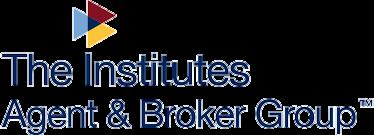
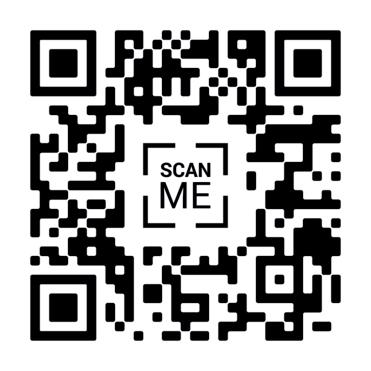
By Patrick Wraight

The insurance world is in a state of constant change and growth. The markets are moving. Insurers are getting into and out of states and lines of business. More clients need a wider variety of policies. Anyone who doesn’t engage in continual learning will fall behind. The most successful insurance professionals are continual learners.
It’s not all about getting your CE in. We all know that licensed insurance practitioners have licenses, and they’re required to keep up with their continuing education requirements. There’s more to learning than just making sure you get your CE in or rushing to get 20 hours done in the last two weeks before your state’s deadline. That’s why, as an insurance learning professional, I recommend a four-layered approach to learning.
The first layer is your daily, small bits of learning. Most of us have a screen (or two or three) in front of us for too many hours every day. There are emails to read and respond to. There is a CRM that needs to be updated. Just when you aren’t expecting it, a chat comes in and you’re locked in for another 20 minutes.
Here’s the plan. When you finish reading your email, and before you begin working on that request that’s in your voicemail, set a 10-minute timer and spend that 10 minutes reading sites like Insurance Journal to get caught up on what’s going on. In 10 minutes, you should be able to browse a few articles, read 2-3, and find out if there is anything big going on in insurance.
You can also supplement your daily learning by subscribing to podcasts or running YouTube videos in the background while you’re doing other things. You can also take a few minutes during your day when you’re not doing anything else to read. Sit in the breakroom, set a timer, and read a book for 10 minutes. Building some small daily learning habits is important to keep you informed and keep your mind in the learning mode.
Once you get into the daily learning habit, the second layer is to build a weekly, dedicated learning habit. This doesn’t have to be anything huge. You don’t have to go to a class (we’ll talk about that later). This weekly habit should be as simple as possible to make it easy to build and easy to maintain.
Whether you find a free webinar through an agent’s association, the CPCU Society, or some other group, get into the habit of setting aside an hour for yourself. This is why the Academy of Insurance hosts weekly one-hour live webinars and has hundreds of hours of on-demand webinars.
You can’t think of it as an hour of lost productivity. It’s an hour that you’re investing in your future productivity, allowing you to become better at what you’re doing and making you better at what you could be doing next.
OK. You have to get your CE in. Why not make it count for more than just the tired old online CE classes that don’t cost much? This is where our third-layer comes in. This is your required learning. It may not be something that you’re working on weekly or monthly. This might be the kind of class that you take once or twice a year and it does something more than just get your CE credits in.
This is the space where we recommend in-person (or online), instructor-led classes that give you three important outcomes. The first outcome is that you can learn something new or learning something more about topics you already know about. The goal of learning is to broaden or deepen what you know and make it more accessible for you to use in your daily work.
The Risk and Education Alliance offers classes that work toward designations, and you get CE for them. Imagine knocking out 16 hours of CE just by being in one class. This is one example of the kinds of classes that are available. Some classes from The Institutes provide CE as long as you pass the test at the end of the course.
The idea here is not to make CE a burden, but a blessing because doing it this way does more than check the box. It adds information to your library and tools in your toolbox to become a better insurance professional.
The final layer is the big learning layer. Here’s where you’re looking beyond today or this month. You’re looking at the end of next year or farther out. You’re asking yourself the question, where do I want to be in three (or five) years? Is there something that you could learn to take the next step in your career? Are there tactics or techniques that you could use to grow and expand your book of business?
What kind of big learning events are we thinking about? Some people might say that they would want to go back to college for another degree. Great. If that serves a purpose for you, do it. Other people might consider a comprehensive designation program like the CPCU or CRM that requires several classes and tests. Some of these designations stretch us because of the breadth of learning and the number of courses that you need to take to finish them. Whether you’re committing to one course a quarter or one a year, continuing on the learning path will always help you and bring you closer to where you want to be.
This four-layered approach: Daily Learning, Weekly Learning, Required Learning, and Big Learning, is designed to help you to become who you want to be in your career and your life. Whether you want something big or not isn’t the issue. The biggest step and most important thing that you can do for yourself is to start today and start small. Here’s to your learning journey.
Patrick Wraight is the Director of the Academy of Insurance, in Insurance Journal company.


By David Carothers
As the commercial insurance industry continues to evolve, independent agencies face mounting pressure from large brokerages that have the financial horsepower and digital infrastructure to lure away top talent. While these larger players are building centralized hubs of operations, smaller and mid-sized agencies must take a different route to compete: building agile, high-performing remote insurance teams grounded in clear core values and culture.
In this article, we’ll unpack how one agency successfully built a national, fully remote team of domestic professionals - and how they used culture, values, and leadership alignment to make it thrive. If you’re struggling to retain employees, improve engagement, or bring consistency to your agency operations, this one’s for you.
The days of needing brick-and-mortar offices in every state you write business are over. More and more agencies are leaning into a remote-first insurance agency model - not just outsourcing to offshore VAs, but hiring high-caliber, U.S.based talent that works from home.
Why? Because the talent war is real.
National and international brokerages are increasingly offering better pay, perks, and prestige to pull top performers out of smaller shops. Many agencies in “God’s Country” - rural or secondary markets - simply don’t have the resources to compete using traditional hiring strategies. But by embracing a remote workforce strategy and investing in the right people, systems, and processes, smaller agencies can punch above their weight.
Want to build a resilient agency? Start by expanding your hiring pool beyond your zip code. Look for people who align with your values - and give them the flexibility and infrastructure to thrive.
A big takeaway from the Heritage agency story is the value of partnership and aligned leadership. Three producersJeremy Huerta, Michael Overstreet, and Caleb Walker - came together from different corners of the country to form a unified agency. Their decision to merge agencies and go
remote was born from friendship, mutual respect, and the understanding that complementary strengths would lead to collective success.
One of their first realizations? Ego had no place in the operation.
They weren’t focused on who got credit. They were focused on winning. And the success of their remote model came down to one simple belief: shared values lead to shared vision.
If you’re looking to grow through partnership or expansion, don’t just ask, “Can we scale together?” Ask, “Do we believe in the same things - and are we willing to build everything on that foundation?”
Core Values: The Foundation of a Scalable Remote Team
You can’t build a strong culture without strong core values - especially when your team is spread across multiple time zones and states. Core values act as your agency’s operating system. They inform hiring, performance evaluations, vendor selection, coaching conversations, and even which technologies you implement.
The Heritage team learned quickly that without clearly defined core values, there was chaos. Once they nailed their values, everything else fell into place. Their tip? Keep it simple and actionable.
Forget the corporate jargon and abstract ideals. Choose a few strong words or phrases that matter deeply to your leadership team. Then, live those out loud - every day.
One of their core values is “Compete” - a value that speaks volumes without needing explanation. When someone clocks in, they know exactly what’s expected. They’re showing up to win.
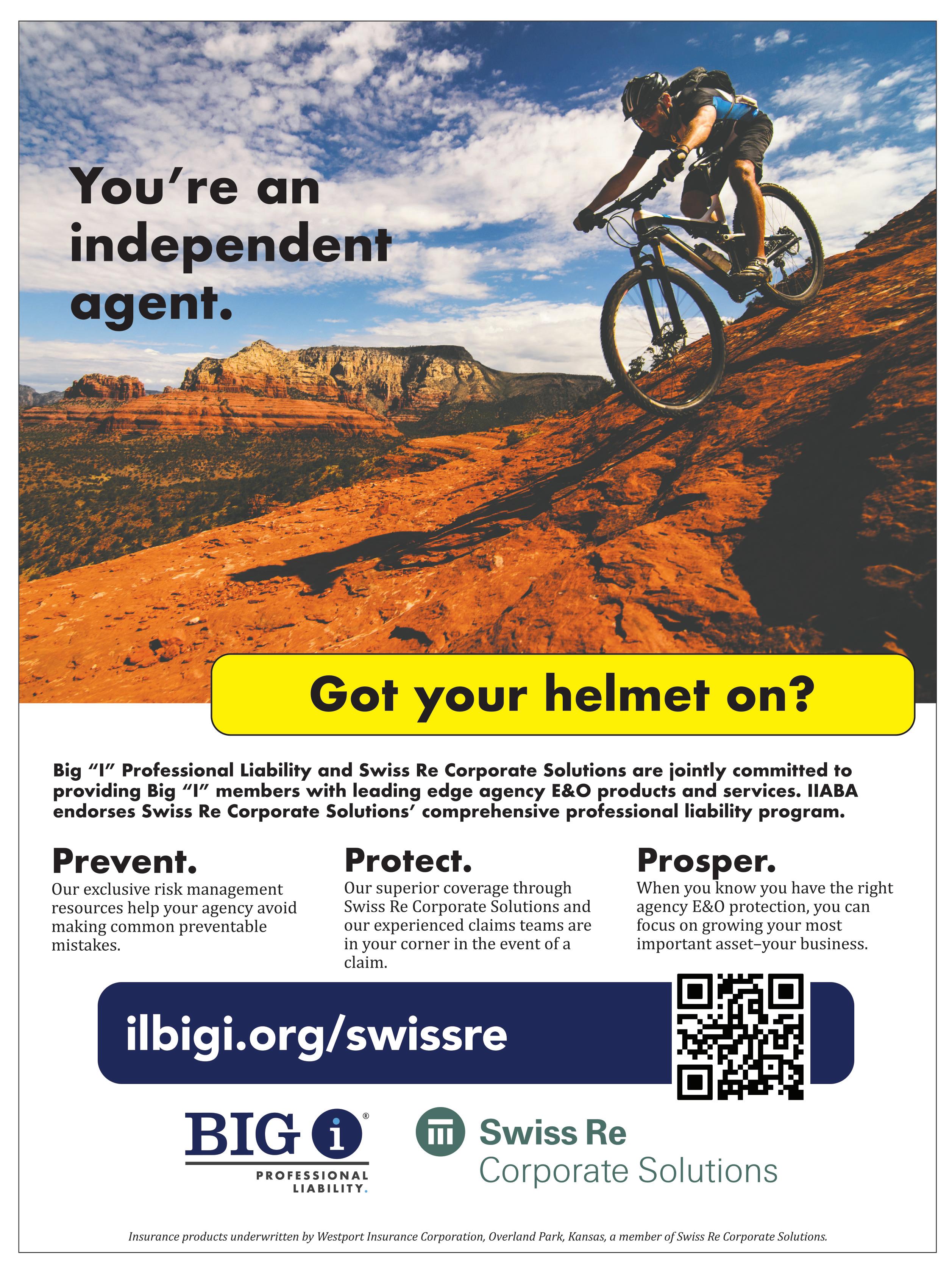
Having a list of core values isn’t enough. You’ve got to operationalize them.
That means:
• Integrating them into weekly meetings
• Using them as a framework for performance feedback
• Celebrating when someone embodies a value
• Checking every major decision against your core values
At Heritage, every month is dedicated to a specific value. They use TED Talks, real-life stories, and team discussions to bring each one to life. It’s not fluff - it’s constant reinforcement.
Want to keep your values top of mind? Start with weekly value spotlights. Highlight someone on your team who embodied a value and share why. This isn’t just management recognizing team members - peer-to-peer recognition is even more powerful.
One of the biggest fears agency owners have when introducing core values is alienating current employees. But let’s flip the script: if someone doesn’t align with your values, do you really want them on your team?
At Heritage, the introduction of core values quickly weeded out misaligned employees. Within weeks, three team members self-selected out of the agency - not because of conflict, but because they didn’t resonate with the new direction.
And that was a good thing.
A value-driven culture naturally attracts the right people and repels the wrong ones. Turnover tied to values alignment isn’t a failure - it’s a refinement. Don’t fear it. Embrace it.
One of the biggest challenges for remote insurance agency leaders is maintaining accountability and coaching performance from a distance. But the Heritage model proves it’s absolutely possible - if your values lead the conversation.
Rather than relying solely on metrics or gut feelings, use core values as the baseline for every coaching discussion.
Listen to recorded calls. Give feedback tied directly to values like “Compete” or “Own It.” Praise what’s working and coach what isn’t - always through the lens of your agency’s values.
And most importantly, hire people who are hungry for feedback. One of the Heritage team members was highlighted for loving criticism - not because she was failing, but because she wanted to be better. That mindset creates a ripple effect across the entire team.
If you want to build culture in a remote insurance agency, you have to be intentional - and one of the best tools in your arsenal is peer recognition.
People love being acknowledged by their peers. It’s authentic. It’s affirming. And it reinforces the right behaviors.
At Heritage, team members are invited to call out colleagues who embody specific core values during weekly meetings. A simple shout-out and a $25 gift card go a long way in building morale. But the real win is the culture it creates: a place where everyone’s watching for excellence, and celebrating it.
David also shared how Target used “Great Team Cards” to create this kind of culture - recognizing both values and performance in front of peers. Think about what your version of the Great Team Card could be.
Let’s not forget - core values aren’t just for team members. They’re also a leadership accountability tool.
Great leaders don’t just preach values - they live them. And that means being open to feedback when you fall short. At Heritage, even the agency partners hold each other accountable. If someone’s decisions or words don’t align with a core value, the others speak up.
And that’s the magic of clarity.
When your team knows the playbook, they’re empowered to speak up - upward, sideways, and downward. The more consistently you apply your values, the stronger your culture becomes.
If you’re ready to create or refine your agency’s values, don’t reinvent the wheel. Start with a simple two-step process.
Download a Core Values Discovery Worksheet to clarify what matters most to you and your leadership team.
Use a Core Values Integration Plan to build rituals and reinforcement strategies into your weekly workflow.
These tools are available at InsuranceFutures.com, and they’re designed to help you move from theory to action.
Remember, values aren’t a “set it and forget it” exercise. They’re a living, breathing part of your business - and when used right, they become your competitive advantag
As remote work becomes more common, culture becomes the ultimate differentiator in the insurance space.
Yes, technology matters. Yes, processes matter. But if your people don’t know what your agency stands for - or how to show up every day in alignment with those standardsyou’ll struggle to retain talent and deliver consistent client experiences.
The truth is, your core values are the best tool you have for scaling excellence. When they’re clear, actionable, and consistently reinforced, they create a rhythm inside your agency. They become the lens through which every decision is made - from hiring to technology to leadership development.
Want a high-performing remote team? Start with values. Build with consistency. Lead with culture.
David Carothers CIC, CRM is the Principal at Florida Risk Partners and founder of Killing Commercial (training community) and host of the Power Producers Podcast.

Many insurance agency owners find themselves stuck in dual roles as producers and operational managers. While they may have staff members handling day-to-day tasks, they often lack a true leadership team capable of making key decisions and driving the business forward. This absence of leadership limits the agency’s growth potential, leading many to plateau at revenue levels between $750,000 and $3 million.
Without a leadership team, the agency owner becomes the bottleneck for all critical decisions, stifling innovation, efficiency, and scalability. The daily demands of sales, service, and operations leave little time to focus on strategic planning or business expansion. This often results in exhaustion, missed opportunities, and a lack of business continuity if the owner is unavailable.
To break through these barriers, agency owners must shift their mindset from being the central figure in operations to building a self-sustaining leadership team that empowers others to lead and execute strategic objectives.
Successful agency leaders understand that their primary responsibility is to cultivate a strong leadership team capable of managing different aspects of the business. Instead of micromanaging daily operations, they focus on developing a strong culture, fostering key relationships, and casting a clear vision and mission for the agency. They delegate effectively, ensuring that decisions can be made without their direct involvement.
By Matt Naimoli
By assembling a competent team, agency owners free themselves to pursue high-impact activities that fuel longterm growth and sustainability. A well-structured leadership team enhances decision-making, increases operational efficiency, and fosters a culture of accountability.
This transformation allows an agency to evolve from a small business into a thriving, scalable enterprise that is no longer solely dependent on the owner’s direct involvement. Additionally, it ensures business continuity, as multiple people are capable of making decisions, keeping operations running smoothly even when the owner is away or focused on highlevel growth initiatives.
Step 1: Establish a leadership team. Developing a leadership team begins by identifying key areas of the business that require dedicated leadership. These typically include: marketing, branding, and lead generation. A leader who ensures the agency has a steady influx of prospective clients through strategic marketing and brand positioning, this individual must track marketing performance, adjust strategies as needed, and maintain alignment with sales efforts to maximize conversions.
• Sales and business development. A dedicated individual who oversees revenue growth, producer performance, and the execution of sales strategies, this leader ensures that new business goals are met while also improving sales training and development programs for producers.
• Service and client retention. This manager is responsible for policyholder experience, customer satisfaction, and retention initiatives. Retaining clients is just as important as acquiring new ones, and a leader in this role must ensure high-touch client service and proactive problem resolution.
• Operations, human resources, and finance. A leader who manages internal processes, compliance, employee development, financial oversight, and vendor relationships, this individual ensures that the agency remains profitable while also maintaining a high-functioning team through recruitment, training, and retention initiatives.
In smaller agencies, the owner may initially hold multiple roles, but the objective should be to delegate these responsibilities over time as revenue allows for additional hires. Effective delegation enables leadership team members to take ownership of their respective areas, reducing the agency owner’s operational burden and positioning the agency for sustainable growth.
By assigning clear responsibilities and measuring outcomes, leaders can be held accountable for the success of their departments, creating a high-performance culture where every leader is driven to succeed.
Step 2: Organize and implement weekly leadership meetings. A well-structured leadership team needs a clear operational framework. Weekly leadership meetings should become a foundational part of the agency’s routine. These meetings should follow a structured agenda, focusing on key performance indicators and strategic discussions. Essential components of an effective leadership meeting include:
• Reviewing key metrics. Assess lead generation, new business growth, client retention rates, and other performance indicators. These metrics should be reviewed in a structured dashboard format that allows for quick decision-making and trend identification.
• Addressing operational and strategic issues. Identify roadblocks, discuss challenges, and develop solutions that improve efficiency and results. Leaders must come prepared with updates, and meetings should be outcome-driven rather than a simple status check.
• Tracking quarterly objectives. Ensure that progress is being made on long-term projects that contribute to the agency’s overall growth strategy. Each leader should have quarterly key performance indicators (KPIs) and projects that align with the broader business goals.
A vital component of this process is the development of an organizational chart that clearly defines roles and responsibilities. This helps team members understand their duties and accountability. If employees are currently handling multiple roles, leadership should work towards clarifying expectations and transitioning team members into specialized roles that align with their strengths and expertise. Clear role definitions prevent inefficiencies and ensure that the right people are focused on the right tasks.
As the leadership team becomes proficient in these structured meetings, each leader should implement a similar framework within their own department. This ensures consistency, alignment, and a shared sense of purpose across all areas of the agency. Departmental meetings should follow the same structured approach, ensuring that information flows efficiently from leadership to employees.
Step 3: Establish quarterly strategic planning meetings. Beyond weekly check-ins, quarterly strategy meetings are essential for driving long-term agency progress. These meetings serve as an opportunity to step back from daily operations and focus on broader strategic initiatives. Key elements of an effective quarterly planning session include:
• Reflecting on wins and lessons learned. Review the successes and challenges of the past 90 days and assess key takeaways that can inform future decisions. Leaders should evaluate performance data, customer feedback, and team input to identify areas for improvement.
• Setting priorities for the upcoming quarter. Identify the most critical projects and initiatives that should be prioritized over the next 90 days. These priorities should align with the agency’s long-term vision and annual business goals.
• Deferring less urgent initiatives. Recognize which tasks should be postponed for a future planning session to maintain focus on immediate priorities. Keeping a backlog of ideas and initiatives ensures that long-term strategic planning remains dynamic and adaptable.
Each leadership team member should facilitate similar quarterly discussions within their respective departments. This creates a structured and scalable approach to goal setting and ensures that all employees are aligned with the agency’s strategic vision. Encouraging feedback and innovation at every level of the organization helps foster engagement and continuous improvement.
Transitioning from a solo operator to a leader of leaders has a profound impact on an agency’s success. Some of the key benefits of building and empowering a leadership team include greater efficiency, increased revenue, and the ability to scale operations without overwhelming the owner. By creating a leadership infrastructure, agencies become more resilient and adaptable to market changes.
Many insurance agencies plateau because the owner remains deeply entrenched in daily operations, leaving little time for strategic growth initiatives. Breaking free from this cycle requires a fundamental shift in perspective.
The role of a business owner is not to manage every detail but to build a team of capable leaders who can drive the agency forward. By fostering a culture of accountability, structure, and forward-thinking leadership, agency owners can create businesses that thrive well beyond their direct involvement.
Ultimately, investing in leadership development is not just about improving efficiency. It is about creating a thriving, resilient business that can operate independently of the owner. When strong leaders are in place, agencies are better positioned for sustained growth and long-term success. The question is not whether to build a leadership team, but rather, can your agency afford not to?
This article originally appeared at https://roughnotes.com/ cultivating-a-strong-leadership-team/
Matt Naimoli is a partner at Legacy Advisors and can be reached at matt@legacy-advisors.com.

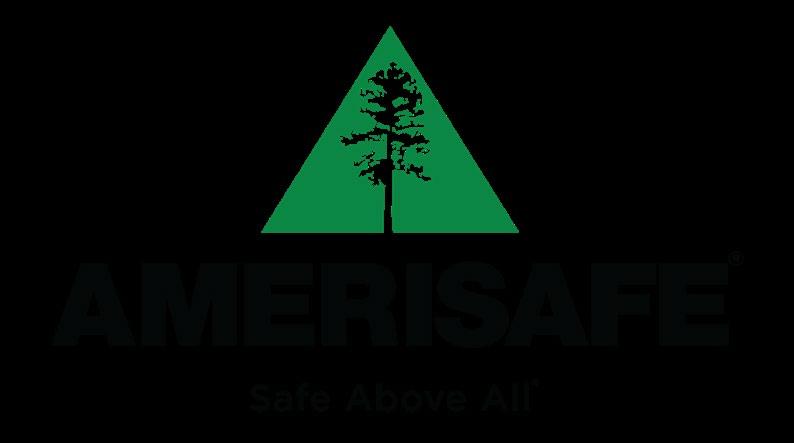

By Meg McKeen

How do you define success? It’s so very personal - as unique as each of us - as how we define success is deeply rooted in our own experiences.
Consider with me the origin of your own definition of success: Perhaps it’s a job title that’s born from your own desire to prove to others - or yourself - that you can achieve. Perhaps success is a dollar amount derived from a place of fear or scarcity - of not having what you, or those you care about or for - need. Perhaps you’ve never really considered it - but you have a deep-down belief that more is always the answer to the question “What is success?”.
As a kid growing up in the 80s, success for me was defined by watching my dad, up before the sun, straightening his tie in the mirror before he’d head out in his pick up truck for a long day of sales calls. His stories from this time are wild - business owners who wouldn’t take his meeting until his 7th try, and others who shamed him for the make of truck he drove and yelled at him as he backed out of their office.
His persistence eventually paid off and those sales started to come. As a provider at heart, he did just that.
Years later, when my own career began in the insurance industry - different, yet similar, to the one modeled for me - I set upon my path.
Strive. Achieve. Endure. More.
And so I did these things.
But a series of my own lived experiences - a divorce, a decision to be child-free, a bout of burnout and a stumble into entrepreneurship - changed my view of myself in the world.
And changed my view of success.
While you’re likely not wearing a tie these days like my dad did, and may not be up for turning your life upside down like I did many years ago, you might be feeling the acute effects of your own misaligned success.
You are not alone as you take a hard look at the place that work fits in your life. Many of us are wondering to ourselves, and even out loud:
What is it I’m striving for?
What does achievement actually look like?
How much more do I have to endure?
What if “more” could instead become “enough?”
Perhaps you are realizing those dopamine hits from your devices now lead to feelings of guilt instead of elation. You are acknowledging that in the urgency to move on to the next thing, there will always be a next thing. And that there are painful consequences to being physically present - but emotionally a million miles away. Or perhaps, and I love this notion, your own shifting success metrics are manifesting in an entirely different way for you.
Flexibility - and freedom - have become the new measure of success for me, and to arrive here has meant doing some of my own deep work - which has included:
Minding your inputs. The influencer you follow online or the seasoned professional whose office is outside your cubicle may not be the best guide to success for you. Surrounding yourself with the ideas and personalities that allow space to explore your own curiosity - and creativity - are crucial as you form your own definition for success.
Knowing when enough is enough. Research is mixed if there is or isn’t a dollar amount that equates to happiness - but there likely is one for you. Spend some time with your own personal finances and your future plans, and double check that your numbers still line up as you consider this next version of success for you.
Honor your commitments - but not your excuses. There will always be a reason not to do the thing that’s on your heart or mind. And while many of the reasons we choose to stay the course are real and valid - they can also quickly become the excuse we’re looking for to stay put. Be aggressively honest with yourself about your willingness to make the changes that might be required to redefine success in your life.
If it feels uneasy, you’re doing it right. Anytime we change how we relate in the world there will be people who are confused - maybe even concerned or threatened - by this change in us. Many might even try to change our minds. Tune into your body and your emotional responses as you move these puzzle pieces in your life - experience tells me the trust you will build as your own best advocate is far greater than the discomfort.
A final note: If you love the hustle, keep hustling. If you love the grind, keep grinding. But if you’re feeling exhausted, on the brink of your own burnout, or just plain over it, give yourself permission to consider that your definition of success is meant to evolve - just as you are.
Once told “you’re someone I’d like to receive bad news from,” Meg McKeen, CIC, founded Adjunct Advisors LLC in 2018 with the simple belief that we can and must do more to support the individuals who choose a career in the insurance industry. Learn more at www.adjunctadvisors.com.


By Kelly Donahue-Piro
In the competitive world of insurance, the strength of your team can make or break your success. A cohesive, well-oiled team isn’t just a nice-to-have; it’s essential for driving business success and enhancing customer satisfaction. So, how do you go about empowering your squad and crafting a winning insurance team? It all starts with a written strategic plan.
A strategic plan provides a clear roadmap for your agency’s future, reviewing and reaffirming your vision and values. It includes detailed job descriptions, key metrics, and actionable steps that align everyone with the agency’s goals. This plan ensures that each team member understands their role and how they contribute to the overall success of the team.
So if you are ready to empower your squad and craft a winning insurance team, review the tips outlined below:
A positive team culture is the backbone of a winning team. Begin by establishing a clear vision and set of core values for your agency, and make sure these are shared with both your current team and new hires. This shared vision and values provide a common purpose and direction, aligning everyone towards the same goals.
Create an inclusive, supportive, and motivating work environment based off of the agencies Vision and Values where everyone feels important. Regular team meetings, social events, and team-building activities can help foster this culture. Encourage open communication and collaboration, ensuring that everyone feels they have a voice. When your team understands and embraces the agency’s vision and values, it enhances their sense of belonging and commitment.
A positive culture will not only boost morale but also enhance productivity and retention. By prioritizing a clear vision, strong values, and a supportive environment, you can build a cohesive team that works together effectively and drives the agency towards long-term success.
Building a winning team starts with recruiting the right people, and sometimes the best candidates might not even be actively looking. Don’t just wait for them to come to you— seek out potential team members who have the skills and personality to fit your agency’s culture.
Think outside the box when targeting potential candidates. Use social media, professional networks, and industry events to find individuals who might not have applied but would be a great fit. Look for candidates who not only have the technical skills required but also embody your company’s values.
Conducting effective interviews and assessments is key. Use behavioral interviews and skill tests to gain valuable insights into a candidate’s suitability. Focus on finding those who align with your vision, are excited about your values, and are eager to contribute to the team’s success. A great team member isn’t just about what’s on their resume - it’s about their enthusiasm, adaptability, and potential to grow with your agency.
The first strong step in empowering your squad is making sure everyone knows their part in the big picture. Clear role definitions and responsibilities are crucial. Start by identifying the key roles your team needs, like sales agents, customer service representatives, and managers. Once these roles are defined, craft comprehensive job descriptions that highlight each role’s responsibilities and expectations.
Communicate these responsibilities to your team members in a fun and engaging way - think team meetings, interactive workshops, or even a role-playing session. Ensure everyone understands their responsibilities and how they contribute to the overall success of the team. This clarity not only eliminates confusion but also gets everyone pumped and aligned, working towards the same goals with enthusiasm. When everyone knows their role, it’s game on for a collaborative, high-achieving team!
Continuous learning and professional growth are vital for maintaining a high-performing team. Develop a comprehensive training program for both new hires and existing team members, ensuring alignment with your agency’s vision, values, and strategic goals. Encourage skill development and career progression through workshops, mentorship programs, and other learning opportunities. A structured training plan covering essential areas such as sales techniques, customer service excellence, and operational best practices will keep your team sharp and motivated.
For expert guidance, consider partnering with Agency Performance Partners. They offer specialized training in sales, customer service, retention, efficiency, and more, ensuring your team receives top-notch, tailored instruction. This investment in training empowers your squad to achieve their best, driving the overall success of your business.
By fostering a culture of continuous improvement and professional growth, you enhance individual performance and team morale. When your team feels supported and equipped with the right skills, they stay motivated, engaged, and aligned with your agency’s goals. Incorporating a comprehensive training plan into your strategic roadmap is key to building a cohesive, high-performing team ready to meet the demands of the competitive insurance industry and drive your agency’s success.
Setting clear Key Performance Indicators (KPIs) and expectations is essential for guiding your team towards success. KPIs provide measurable metrics that demonstrate how effectively your team is achieving key business objectives. Identify the most relevant KPIs for your agency, such as quote closing ratios, cancellation rates, retention rates, sales targets, and customer satisfaction scores.
Align these KPIs with your overall business objectives and communicate them clearly to your team. Regularly review progress and adjust as necessary to ensure everyone stays on track. This approach not only provides direction and motivation but also creates a transparent and accountable environment, helping your team achieve their full potential.
Clear KPIs and expectations allow for continuous performance monitoring and improvement. They help identify areas of strength and those needing development, ensuring that your team is always working towards the agency’s goals. By focusing on relevant KPIs, you empower your team to excel and drive your business towards long-term success.

Effective communication and collaboration are the secret sauce to a productive work environment. Use collaborative tools like Zoom or Microsoft Teams and foster an open-door policy to encourage team interaction. When everyone is on the same page and feels comfortable sharing ideas, magic happens! Address conflicts promptly and constructively to maintain a positive atmosphere - think of it as keeping the energy flowing smoothly.
By promoting collaboration, you empower your squad to work together towards common goals, leveraging each other’s strengths and talents. When your team feels connected and supported, they’re more likely to bring their A-game every day. Communication should be fun and engaging.
Recognizing and celebrating achievements is the key to keeping motivation and morale sky-high. Regularly acknowledge both team and individual accomplishments through bonuses, public shout-outs, or career advancement opportunities. When your team sees their hard work being appreciated, it fuels their drive to excel even more.
Creating a culture of appreciation and positive reinforcement encourages continued excellence and fosters a sense of pride and belonging among your team members. Whether it’s a fun team celebration or a heartfelt thank-you note, these gestures go a long way in building a happy, motivated, and highperforming team. So, let’s make recognition a regular part of your routine and watch your team soar!
Regular performance reviews and feedback are essential for continuous improvement. At a minimum, you should schedule quarterly check-ins with all team members to review performance, discuss progress, and set goals. These check-ins provide an opportunity to track performance metrics, identify areas for enhancement, and celebrate successes.
In addition to quarterly check-ins, conduct a comprehensive yearly review to evaluate overall performance and set longterm goals. Provide constructive feedback and collaborate with your team members to develop improvement plans. By addressing performance issues promptly and positively, you empower your squad to grow and succeed. This ongoing dialogue helps maintain high standards, fosters development, and keeps everyone aligned with the agency’s goals.
Create an inclusive, supportive, and motivating work environment based off of the agencies Vision and Values where everyone feels important.
In the competitive world of insurance, the strength of your team can make or break your success. A cohesive, well-oiled team isn’t just a nice-to-have; it’s essential for driving business success and enhancing customer satisfaction. Empowering your squad starts with a comprehensive, written strategic plan that reviews and reaffirms your agency’s vision, values, job descriptions, and key metrics. This plan provides a clear roadmap for your agency’s future, ensuring everyone understands their role and how they contribute to the team’s overall success.
To build a winning insurance team, prioritize fostering a positive team culture, recruiting the right talent, and defining clear roles and responsibilities. Implement a comprehensive training plan that includes continuous learning opportunities and specialized training in sales, customer service, retention, and efficiency. Set clear KPIs and expectations, encourage
open communication and collaboration, and recognize and reward achievements regularly. Monitoring performance through quarterly check-ins and yearly reviews ensures continuous improvement and alignment with your agency’s goals.
Crafting and empowering your squad is an ongoing process that requires dedication and effort. By following these steps, you can build a cohesive, high-performing team that drives business success and enhances customer satisfaction. Start implementing these strategies today and watch your team thrive. Empower your squad and craft a winning insurance team now!
Kelly Donahue-Piro, founder and president of Agency Performance Partners, is a no-nonsense effectiveness expert who has helped hundreds of insurance agencies identify and capitalize on sustainable improvement opportunities. Go to agencyperformancepartners.com, for more information.
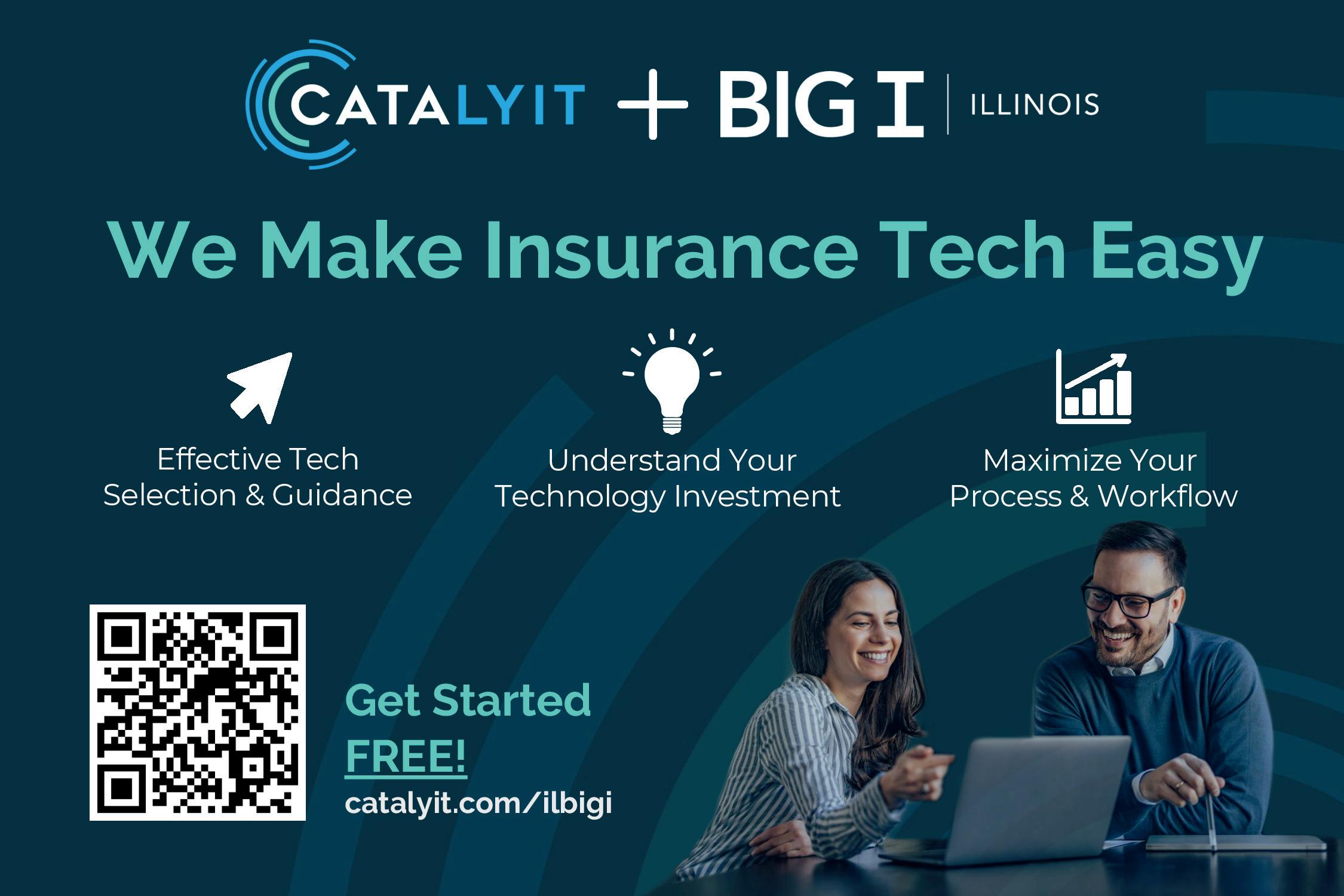
By Casey Nelson
Your agency already has enough tech tools to fill a Best Buy flyer. CRM? Check. VOIP? Obviously. AMS? Of course. But somehow, your team is still drowning in sticky notes, duplicated tasks, and “Did we follow up on that?” moments.
Here’s the hard truth: You don’t have a tech problem. You have a foundation problem.
That’s what we’re digging into at this year’s Big I Illinois CONVO. My session is called “Fix the Foundation: Tech, Process & Prompts for a Smarter, More Automated Agency.” The title reflects exactly what this session is about: strengthening the operational backbone of your agency so the tools you have can actually do their job.
Technology can’t fix a broken process. It’s like putting a jet engine on a lawnmower with dull blades. Sure, it might move faster, but it’s still not cutting the grass any better.
Too many agencies are chasing the next shiny object: the newest CRM, the smartest chatbot, the all-in-one platform that promises to fix everything. But without documented processes, clearly defined roles, and thoughtful automation, it’s just chaos moving at the speed of light.
Instead, we need to get grounded. I’ll show you how to:
• Spot the gaps in your tech stack (and stop buying tools you don’t need)
• Build standard operating procedures your team will actually follow
• Use automation to eliminate the “Did someone already do this?” moments
• Train your AI tools to work for you, not confuse you
• Create clarity and consistency through documented workflows that scale
These aren’t just nice ideas. These are practical strategies that I’ve seen work in real agencies with real-world challenges. We’ll keep it tactical, digestible, and actually doable.
The independent agency space is shifting fast. Clients expect Amazon-like speed, your team expects tech that works, and everyone expects you to figure it all out yesterday.
Automation and AI are no longer optional. They’re essential. But they can’t be effective unless they’re built on a foundation of clarity. If your workflows are fuzzy, your results will be too.

That’s why this moment matters. You have a window right now to realign how your agency operates - to tighten up, clean up, and power up the way you work. Not just for speed, but for consistency. For better client experiences. For scalability without burnout.
If you join me at CONVO, you’ll walk away with:
• A framework to assess your current tools, spot redundancies, and uncover underused potential
• A simple standard operating procedure template you can take home and use Monday morning
• Real-world automation ideas you can implement right away (even if you’re not tech-savvy)
• Prompt-building tips to get better, more consistent results from Copilot, ChatGPT, and other AI tools
• A mindset and maintenance plan for building sustainable, scalable processes that don’t fall apart in three months
This session is for the operations-minded. The curious. The overworked-but-optimistic agency leaders who know there has to be a better way.
Maybe you’re already knee-deep in tech and wondering why it’s not clicking. Or maybe you’ve held off because you didn’t want to invest in more complexity. Either way, this session is your roadmap.
This isn’t about adding more. It’s about making what you already have work better. That’s the power of a strong foundation.
If you’re tired of duct-taping your way through another renewal cycle and calling it innovation, come to this session. If you’re ready to bring some order to the chaos, come to this session. If you want your agency to run smoother, faster, and more consistently - this is where we start.
So grab your CONVO badge, bring your questions, and let’s get to work. I promise: no fluff, just real talk about fixing what matters.
See you there.
Casey Nelson is the Director of Consulting Services at Catalyit and can be reached at Casey@catalyit.com.
October 7-9
Marrott Pere Marquette & Civic Center

CONVO is the biggest annual gathering for independent insurance professionals - an event designed to spark connection, deliver practical insights, and strengthen the future of your agency.
Earn up to 12 hours of Illinois CE credit with industry-driven educational programming. You’ll hear about the latest topics and news that matter most to you from leading experts and your peers.
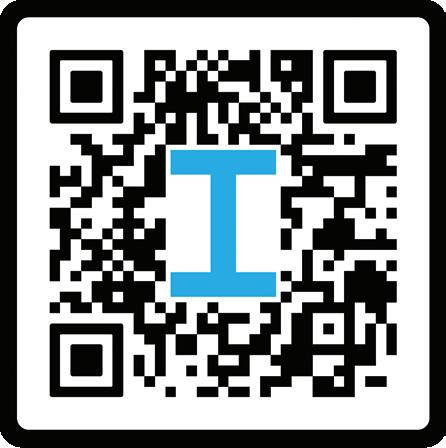
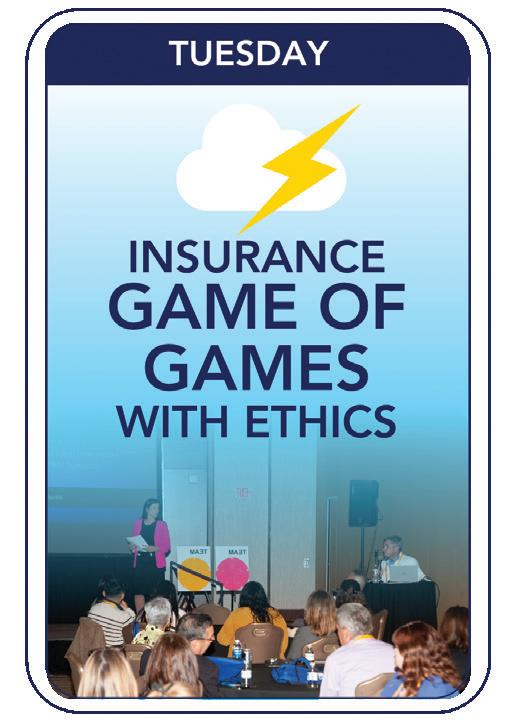
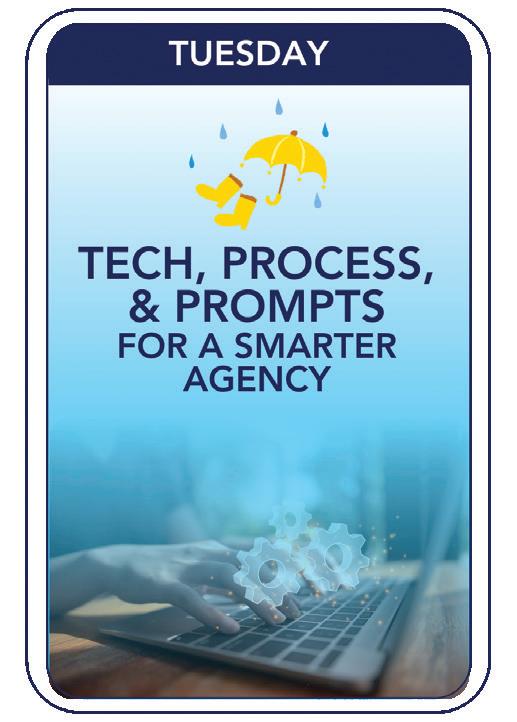
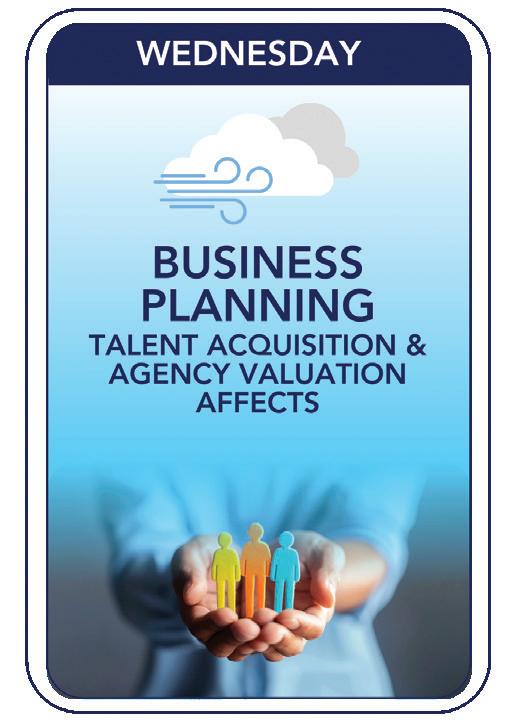
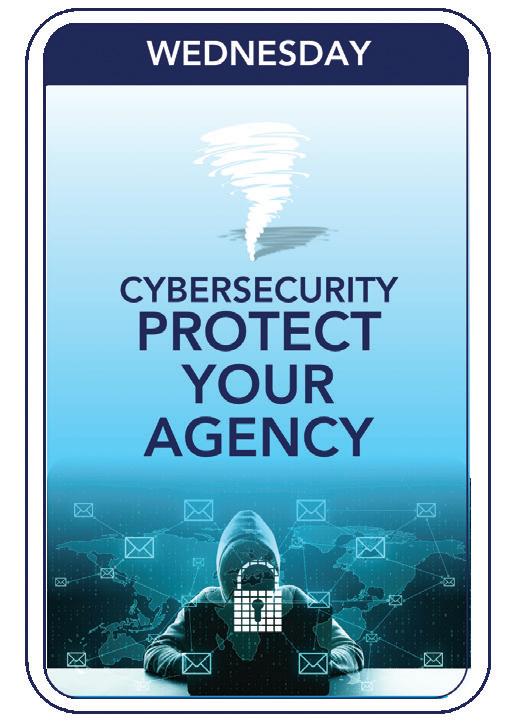
*Separate Fee to benefit State PAC
Join us for a round of golf at Weaver Ridge Golc Club in Peoria, complete with food and beverages, friendly competition, and a great opportunity to network with agents in advance of CONVO on Tuesday, October 7, 10:00 am.
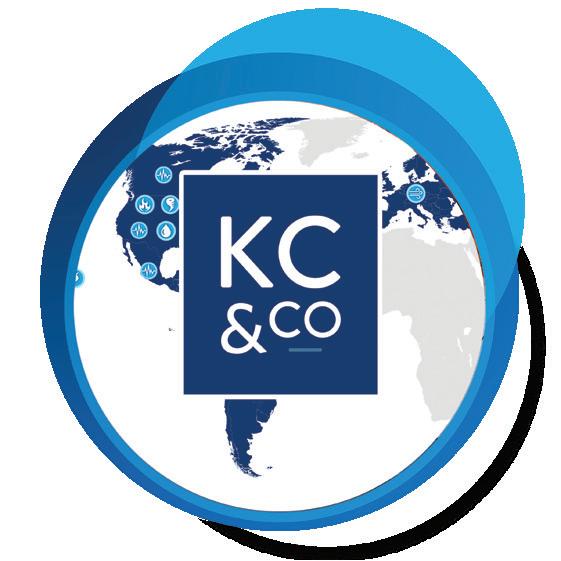
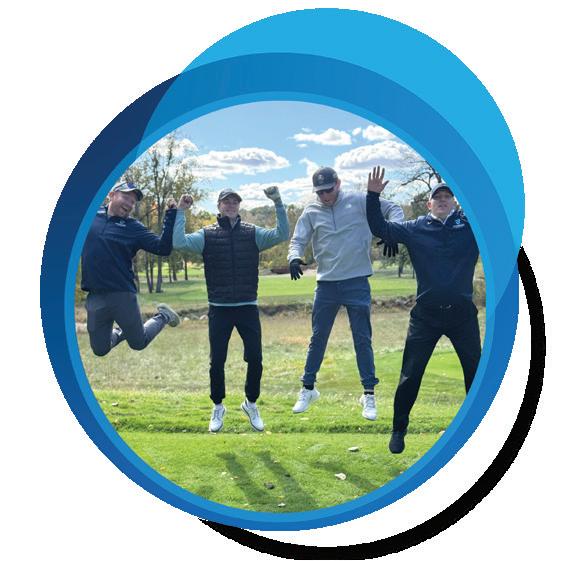
Representatives from Karen Clark & Co (KCC), the innovation and technology leader in catastrophe risk modeling, will be presenting this year’s eye-opening general session: Navigating the Storm: How Catastrophe Models, Market Strategy, and Resilient Design Are Shaping the Future.
Find shelter from the storm inside the Midwest’s largest industry tradeshow. Explore solutions from 100+ vendors, including carriers, technology partners, market access providers, and association programs built to support your agency. Whether you’re looking for new tools, strategic connections, or just some clarity amid the chaos, this is where it all comes together.
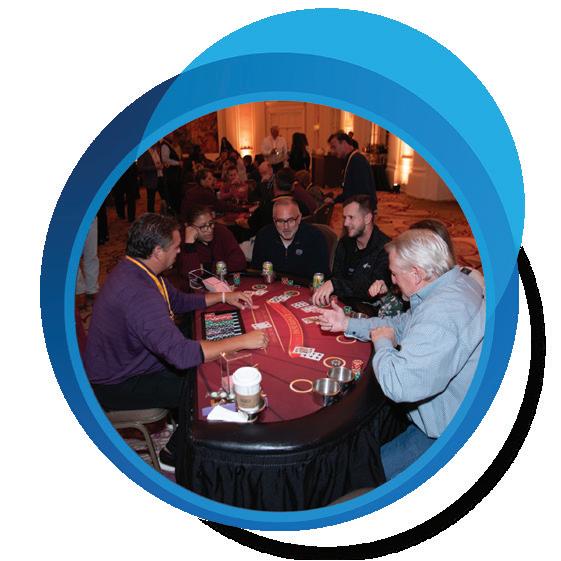
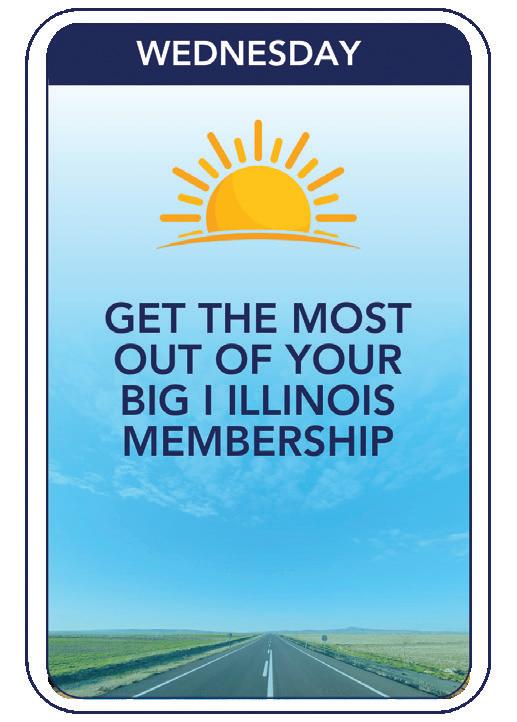

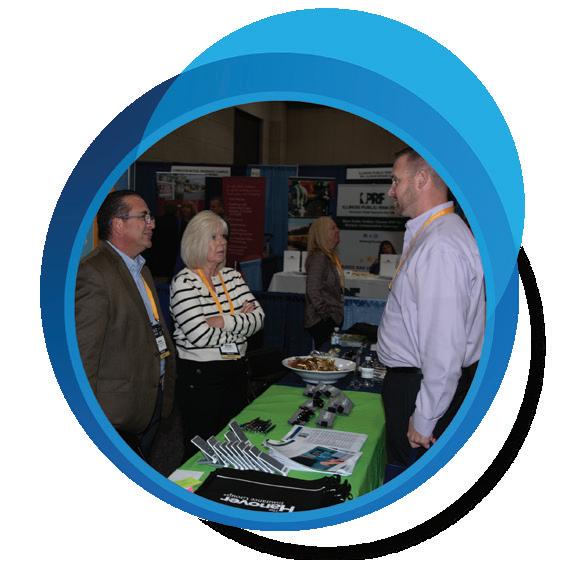
CONVO offers several opportunities to build your community of knowledgable professionals, make new friends and contacts, and find out what your old friends and peers have been up to!
Welcome Reception - Dutch Dine Arounds Casino Night - Tradeshow - Big Party
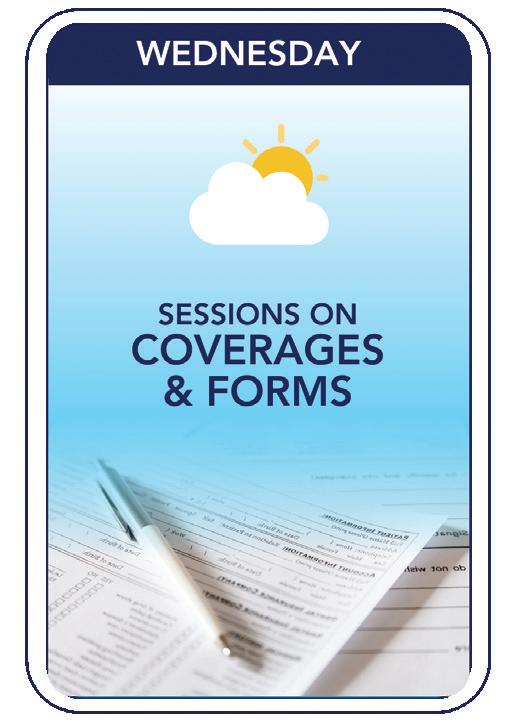
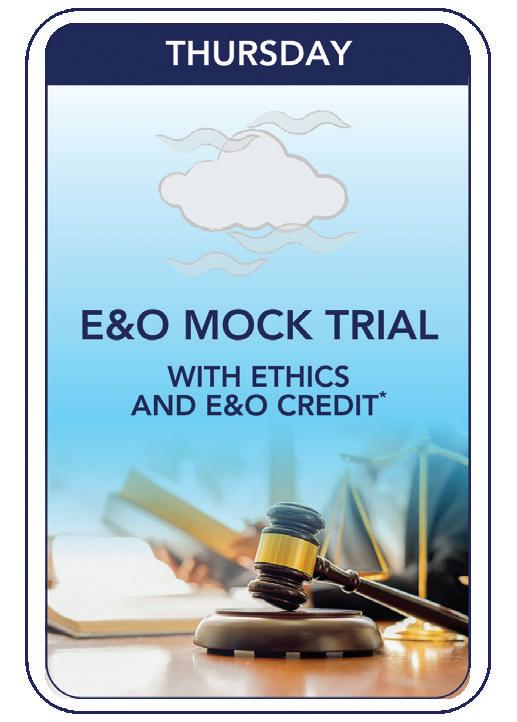
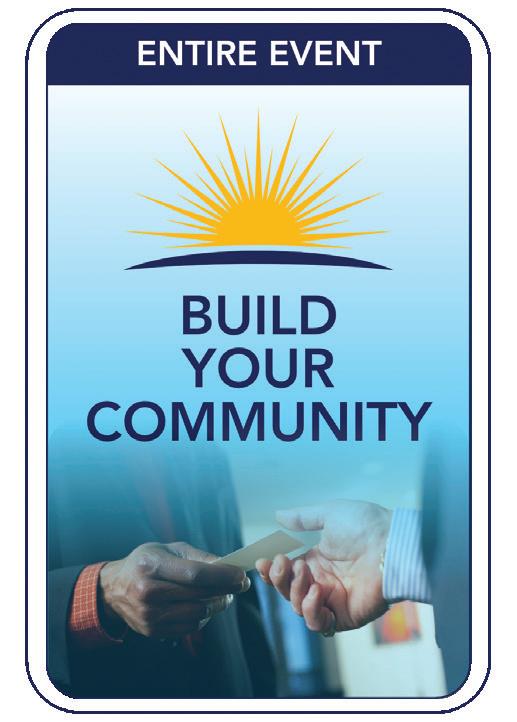
Marrott Pere Marquette & Civic Center
These Leaders Were Too. Here’s Why They Came to CONVO Anyway.
CONVO offers many opportunities for networking and education. It opens the door to real conversations with agents who get what you’re going through and helps you find new solutions for your agency. The classes are the hottest topics in the industry with speakers who are at the cutting edge in their fields, allowing all agents to receive the information firsthand.
- Lisa Lukens
I’ve attended CONVO in one capacity or another for eight years, and it’s always worth it. The chance to connect with agents from all over, each with different backgrounds but the same drive to serve their clients, is incredibly valuable. I’ve learned more through those relationships than any textbook could offer. There’s real camaraderie in our industry, and CONVO brings it to life like no other event.
- Chas Hruska

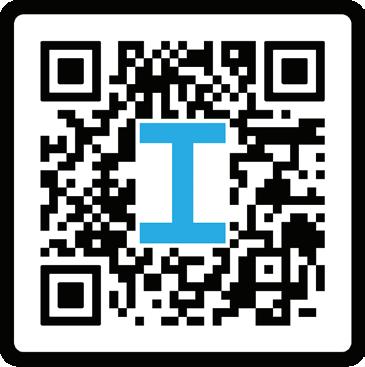
Your company should be a part of the Midwest’s largest industry tradeshow. Secure your space right away as there are only a FEW booths left!
Studies say it takes seven to 11 times for somebody to see your message and actually remember it. One of the best reasons to sponsor a portion of CONVO is the number of people (over 800!) that will have eyes on your brand. This is an opportunity for your business to solidify your presence in the industry. Plus, sponsoring is yet another way your company can build trust with current and potential agencies.
And to top it off, you’ll be helping keep the costs down for agents to attend the event. Your contracted agencies will continue to attend to increase their knowledge, which in return, could affect your bottom line.
Every person that attends CONVO will receive an event program. This is the guide to the entire event and will be referenced by attendees multiple times throughout the three days, and even after the event is over!
(Subject to Change)

Tuesday, October 7
10:00 – 4:00 pm CONVO Golf Outing
1:00 – 4:00 pm Concurrent Education Sessions (CE)
5:00 – 6:00 pm Welcome Reception
- Enjoy a drink and hors d’ oeuvres before heading out to dinner.
6:00 – 8:00 pm Dutch Dine Arounds/Company Dinners
- Head out for dinner with your Company Partners, old friends, or new acquaintances. Don’t have dinner plans? Sign up for the Dutch Dine Arounds with Big I Illinois staff. We’ve made reservations and travel arrangements. **Hence the name “Dutch,” each attendee is responsible for paying for their own dinner.
6:00 – 8:00 pm Past President’s Dinner (Invite Only)
8:00 – 11:00 pm Casino Night
- Sit back, relax, and let the good times roll. When you come back from dinner join us for an exciting evening of fun & games.
Wednesday, October 8
7:00 am Continental Breakfast/CONVO Registration Desk Opens
8:00 - 11:00 am Keynote General Session (CE)
- Navigating the Storm: How Catastrophe Models, Market Strategy, and Resilient Design Are Shaping the Future
- We will also recognize our award recipients including Agent of the Year, Agency of the Year, Young Agent of the Year and more.
11:00 am – 2:00 pm Tradeshow and Food Truck Lunch
2:00 – 5:00 pm Concurrent Education Sessions (CE)
2:30 pm Illinois 1752 Club Meeting
6:00 – 11:00 pm Big Party - Dinner, Dancing, and Drinks
Thursday, October 9
7:00 – 8:30 am Hot Breakfast
8:30 – 11:30 am E&O Mock Trial with Ethics (CE)
October 7-9
- This engaging and eye-opening session brings a fictional, but all-too-realistic, errors & omissions case to life in a courtroom setting. You’ll follow the twists and turns of a trial involving an insurance agent and serve as the jury after hearing the evidence.
Peoria, IL
Marrott Pere Marquette & Civic Center
*Counts towards three hours of the necessary credit toward the E&O discount. *Satisfies the IL Ethics credit requirement.
We can’t control the forecast, but we can choose how we navigate the storm.

By John Dobbins
When I speak to a group, I like to begin with a bit of humor. Healthcare is a serious topic, often filled with frustration and complexity, so it helps to start with something light. One of my go-to lines is this: Statistically, 95% of pediatricians are unhappy. Why? Because they have little patients. It gets a laugh, but more importantly, it opens the door to a much more sobering conversation. The reality is that the state of healthcare today is anything but funny. As a benefits advisor at J. Krug, I work closely with employers who are facing unprecedented challenges. Some are seeing health insurance premiums increase by 30 to 45 percent in a single year. Others are being dropped from their plans altogether. Helping companies navigate this landscape and find sustainable solutions has become one of the most important parts of my role.
In May 2021, I was training for a half marathon. I had just received my second COVID vaccine when, the following day, I passed out. About two weeks later, I began experiencing chest pains.
It led to an 18-month stretch of intense medical treatment. I spent a total of 153 days in the hospital, underwent six cardioversions, and had two cardiac ablations to try to stabilize my heart rhythm. To closely monitor my condition, a heart monitor was implanted in my chest. It was a physically and emotionally draining experience - but one that reshaped my understanding of the healthcare system from the inside out.
Thankfully, I’m doing much better now. I’m weaning off medication and recently started rowing again. Here’s where it gets eye-opening. At one point, my doctor jokingly called me “the million-dollar man.” That comment got me thinking. I started digging into the total cost of my care, which turned out to be far from easy. Transparency in healthcare pricing is still incredibly limited. But after some persistence, I estimated the total cost of my treatment at around $1.125 million.
Although the total cost of my care was estimated at over $1.1 million, my actual out-of-pocket expense was far more manageable. Over the course of treatment, my health savings account (HSA) plan carried an annual premium of $18,000. My employer covered $12,000 of that amount, while I paid the remaining $6,000. In addition, I reached my out-of-pocket maximum of $6,000. In total, I paid $24,000 for more than a million dollars’ worth of medical care.
On the one hand, I’m grateful. That coverage saved me from financial devastation. On the other hand, costs like mine become part of the larger financial burden that drives up premiums for everyone else.
This experience had a lasting impact on me. It led to three major takeaways:
1. I became committed to being the healthiest version of myself and helping others achieve the same goal.
2. I made it my mission to help employers and employees better manage healthcare costs and advocate for transparency, self-advocacy and helping lower annual healthcare costs.
3. Led me to Creating a healthcare Review Process that identifies areas of cost reductions and strategies to chip away at costs.
Understanding your health plan is the first step to controlling costs. Employees should know what is covered, which providers are in-network, and how to avoid costly missteps like unnecessary emergency room visits or out-of-network services. Many plans offer hidden value through wellness incentives, gym reimbursements, and telehealth. These may only return a few hundred dollars, but small savings add up. Every dollar saved helps chip away at the bigger picture.
Your health history is a powerful resource. Use your doctor’s mobile app or your insurance carrier’s portal to stay on top of test results, past visits, prescriptions, and provider notes. Being informed allows you to ask smarter questions, avoid duplicate services, and better understand underlying health issues. With that knowledge, you can take practical stepslike healthy eating, regular exercise, and consistent care - to improve outcomes and reduce expenses. Self-advocacy starts with awareness.
One of the most important tools you have is your voice. Don’t be afraid to question charges or second-guess recommendations. I once received a bill for a test that was significantly overpriced. After referencing national pricing and making a call, the charge was reduced. In another case, a provider recommended a high-cost test that I knew wasn’t necessary. After some discussion, he agreed to proceed with the basic version - saving nearly $20,000. That one call prevented me from hitting my deductible and out-of-pocket maximum. The lesson: ask, challenge, and chip away at costs wherever you can.
4. Use HSA Plans Strategically
Health Savings Accounts are one of the most effective and flexible financial tools for managing healthcare expenses. Contributions are tax-deductible, earnings grow tax-free, and withdrawals for qualified medical expenses are also tax-free. These accounts roll over annually and can serve as a supplemental healthcare fund in retirement. Depending on your tax bracket, HSAs can deliver savings of 15 to 40 percent - and those dollars go further when paired with smart plan utilization.
5. Promote a Culture of Health
Employers play a critical role in shaping the overall wellness of their teams. Go beyond offering coverage and build a culture around healthy habits. That could include providing healthy snacks in the office, hosting fitness challenges, subsidizing gym memberships, or offering onsite biometric screenings. Small investments in health today can significantly reduce claims and long-term expenses tomorrow.
At J. Krug, we partner with our clients on this journey. Our goal is to give companies and their people a greater sense of control in a system that often feels anything but. Whether it’s reducing unnecessary claims, helping employees understand their options, or simply showing them how to advocate for themselves, we’re here to help them chip away at costs, one decision at a time.
And if you remember nothing else, let it be this: ask questions, stay informed, take action early, and always be your own advocate. Because when it comes to healthcare, small steps can lead to big savings - and even bigger peace of mind.
John Dobbins is a Benefits Counselor at J. Krug. Find out more at jkrug.com.
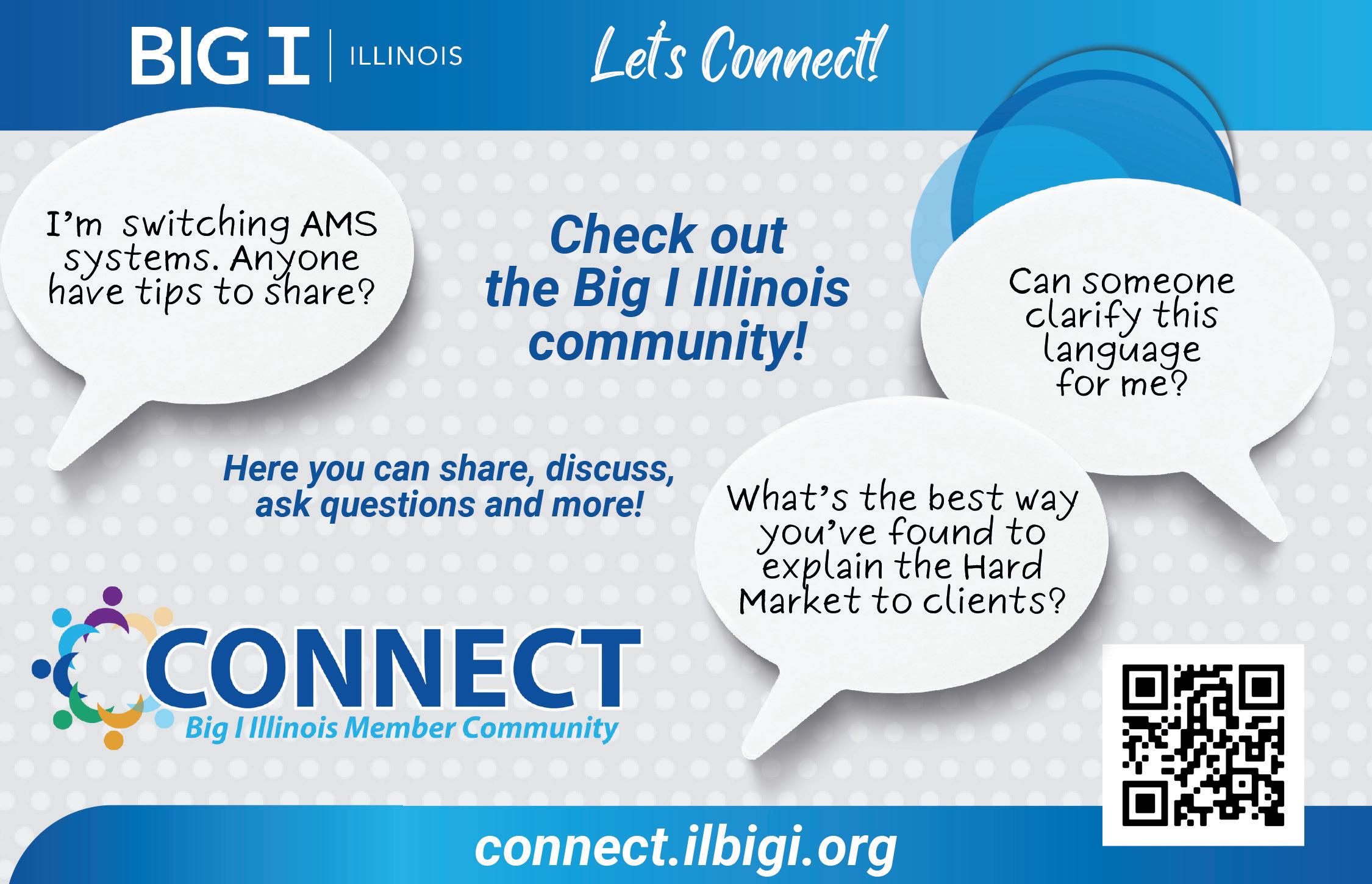




Why did you choose to pursue a career in insurance?
I originally came from a healthcare background, but over time I realized it wasn’t the right fit for me. I made the switch to insurance because I was looking for a career that still allowed me to help people but in a way that better aligned with my strengths and interests. Ultimately, insurance felt like the right place for me to grow both personally and professionally!
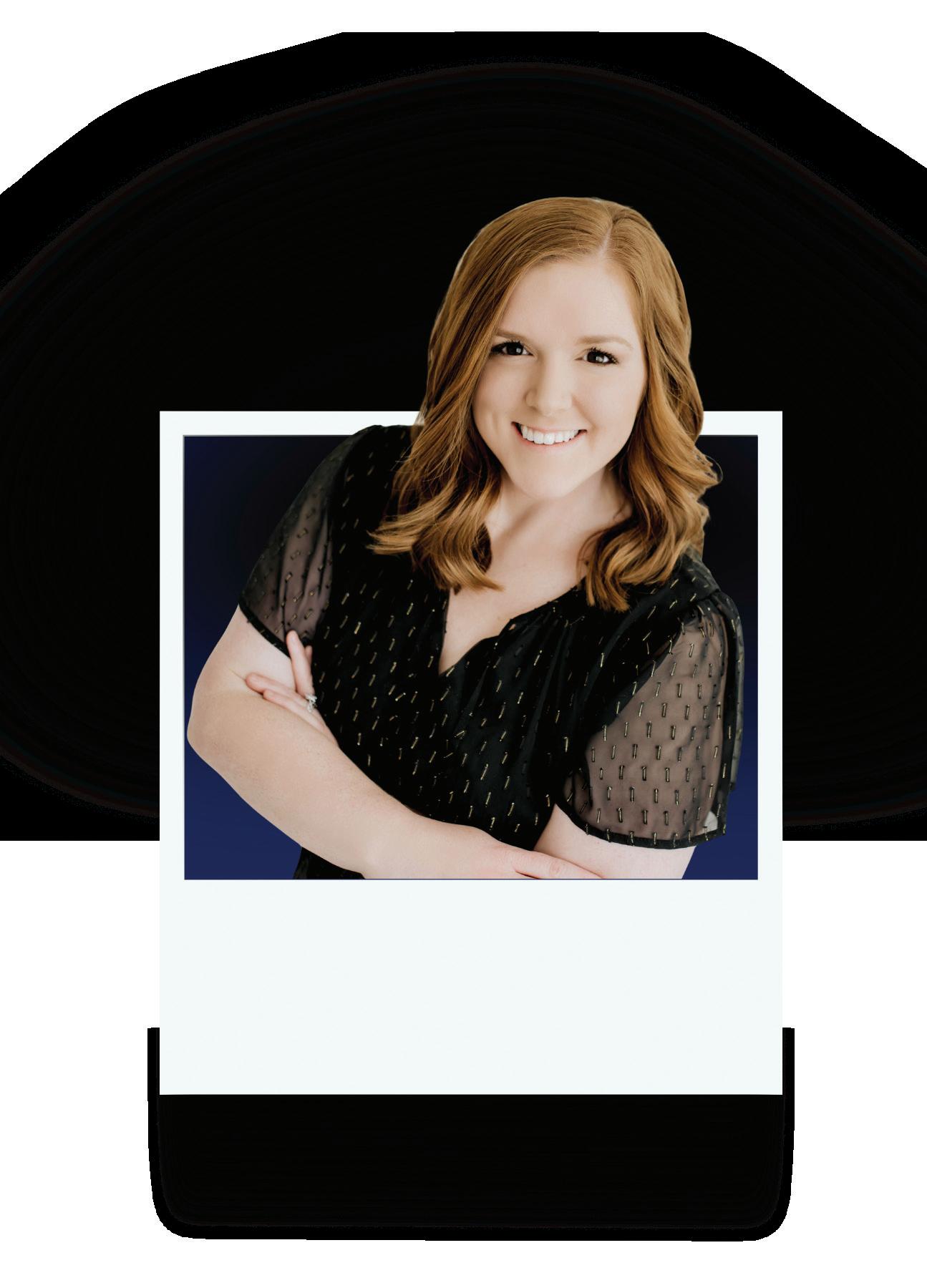
What obstacles did you face when you first started, and how did you overcome them?
One of the biggest obstacles I faced when I first started in the insurance industry was being a young woman in a field where experience and age are often associated with credibility. I quickly realized that some people didn’t take me as seriously as they did older, more seasoned professionals. However, I never let that stop me from proving myself. Being uncomfortable pushed me to grow to heights I never thought possible in my career. It forced me to step up, build confidence, and prove myself through my work.
What’s something people should know about your generation in the workplace?
I think people should know that my generation brings a strong sense of adaptability and ambition to the industry. We grew up with rapidly evolving technology, so we’re quick to adopt new tools to find smarter and more efficient ways to get things done. We’re not afraid to question traditional methods, especially in industries like insurance where change can be slow. Young agents bring fresh energy and perspectives, and I am excited to watch the business continue to evolve.
How has this industry impacted your life?
Insurance has pushed me grow in ways I didn’t expect possible. It’s boosted my confidence by challenging me every day and has introduced me to so many people, some that have become lifelong friends. I’ve been lucky to witness some of my clients’ biggest life moments, like buying their first home or starting a family, which makes this work truly rewarding. I also want to give a special thanks to my agency owner, Bob Matzenbacher, whose support and mentorship have been a huge part of my journey and growth in this industry.
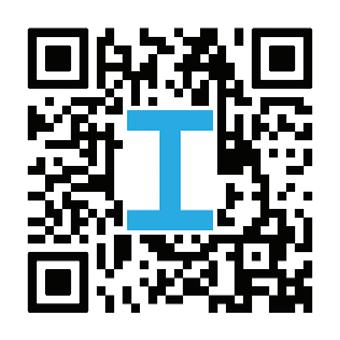

Rather than attempt to be all things to every kind of business, we focus on the ones we know best—restaurants and bars, grocery and convenience stores, medical clinics and auto service shops—to deliver outstanding property, casualty and workers compensation insurance. Deep niche expertise, with insight into unique business risks, is how we cover the details that make the biggest difference to our policyholders.
To discuss an agency appointment, give us a call at 888.5.SOCIETY or visit societyinsurance.com

Our original specialty, Workers’ Comp has long served as the anchor line for our growing suite of commercial products. We distinguish our coverage by providing a host of value-added services before, during, and after a claim.
Visit www.guard.com to learn more.
www.guard.com
Thank you to our Associate Members.

Progressive
Surplus Line Association of Illinois
Silver Level
Bliss-McKnight IMT Insurance
Arlington/Roe
Blue Cross/Blue Shield of IL
CRC Group
Pekin Insurance
Keystone Insurance Group, Inc. MEM
Peoples Premium Finance
Bronze Level
1Fort
A. J. Wayne & Associates
AAA, The Auto Club Group
AMERISAFE
AmTrust Insurance
Apollo Brokers dba Limit
Auto-Owners Insurance Co.
Berkley Small Business Solutions
Berkshire Hathaway GUARD Insurance Companies
BluSky Restoration Contractors, LLC
Boundless Rider
BriteCo
Central Illinois Mutual Insurance Company
Chubb
Columbia Insurance Group
Cowbell Cyber
Cray, Kaiser Ltd.
Donald Gaddis Company, Inc.
Donegal Insurance Group
EMC Insurance
Encova Insurance
Erie Insurance Group
Forreston Mutual Insurance Company
Graham-Rogers
Grinnell Mutual Reinsurance Company
IA Valuations
Illinois Mine Subsidence Ins Fund
Illinois Public Risk Fund
Imperial PFS
Independent Mutual Fire Insurance Company
Indiana Farmers Insurance
Insurance Program Managers Group (IPMG)
J M Wilson
Levitate
Liberty Mutual/Safeco Insurance
Madison Mutual Insurance Company
Main Street America Insurance
Mercury Insurance Group
Midwest Insurance Company
Nationwide
Paychex HR and Payroll Solutions
Rockford Mutual Ins. Co.
SECURA Insurance
ServiceMaster DSI
Society Insurance
SPRISKA - Specialty Risk of America
Steadily
Summit Insurance
Travelers
W. A. Schickedanz Agency, Inc./Interstate Risk Placement
West Bend Insurance Company
Western National Insurance
Westfield
XPT Specialty
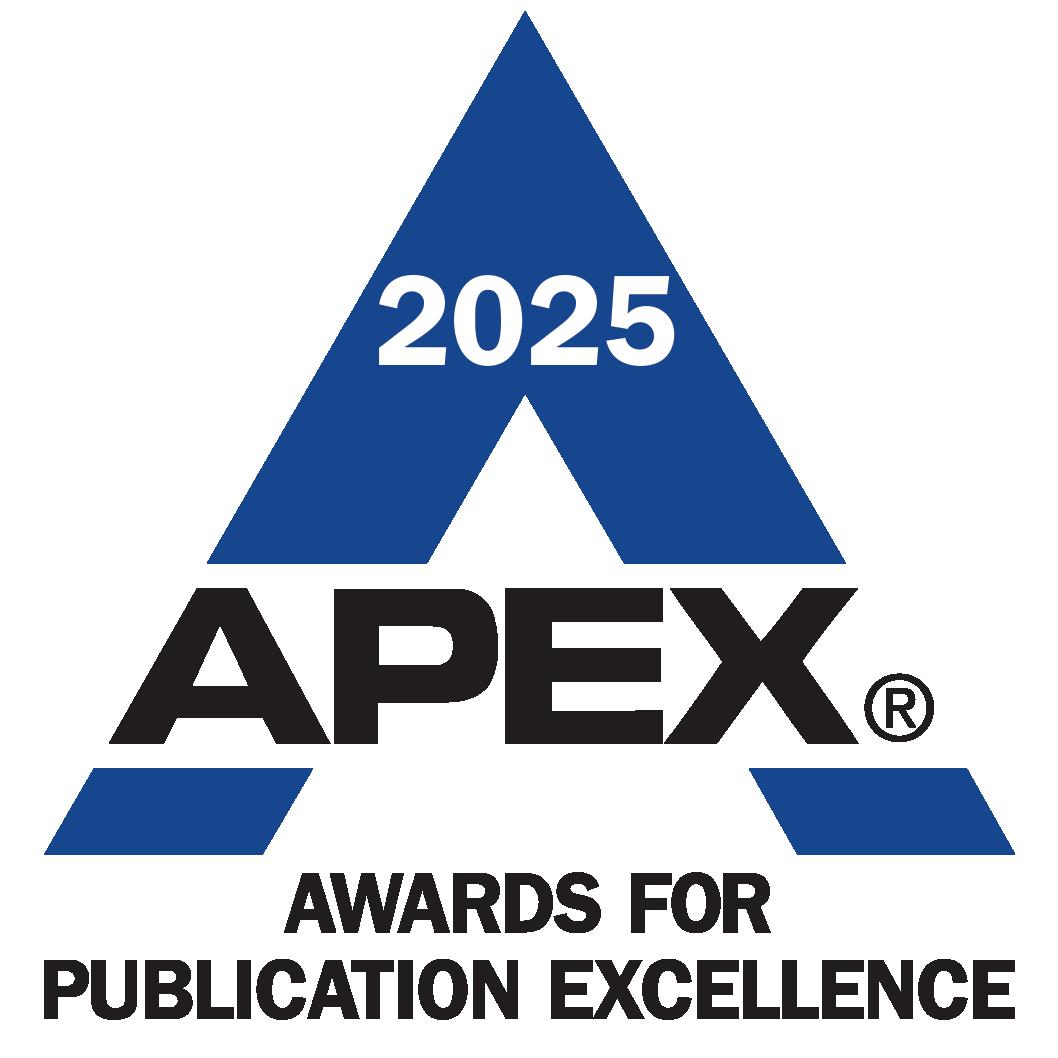
Magazines, Journals & Tabloids
1-2 Person Produced
Rachel Romines Director of Communications
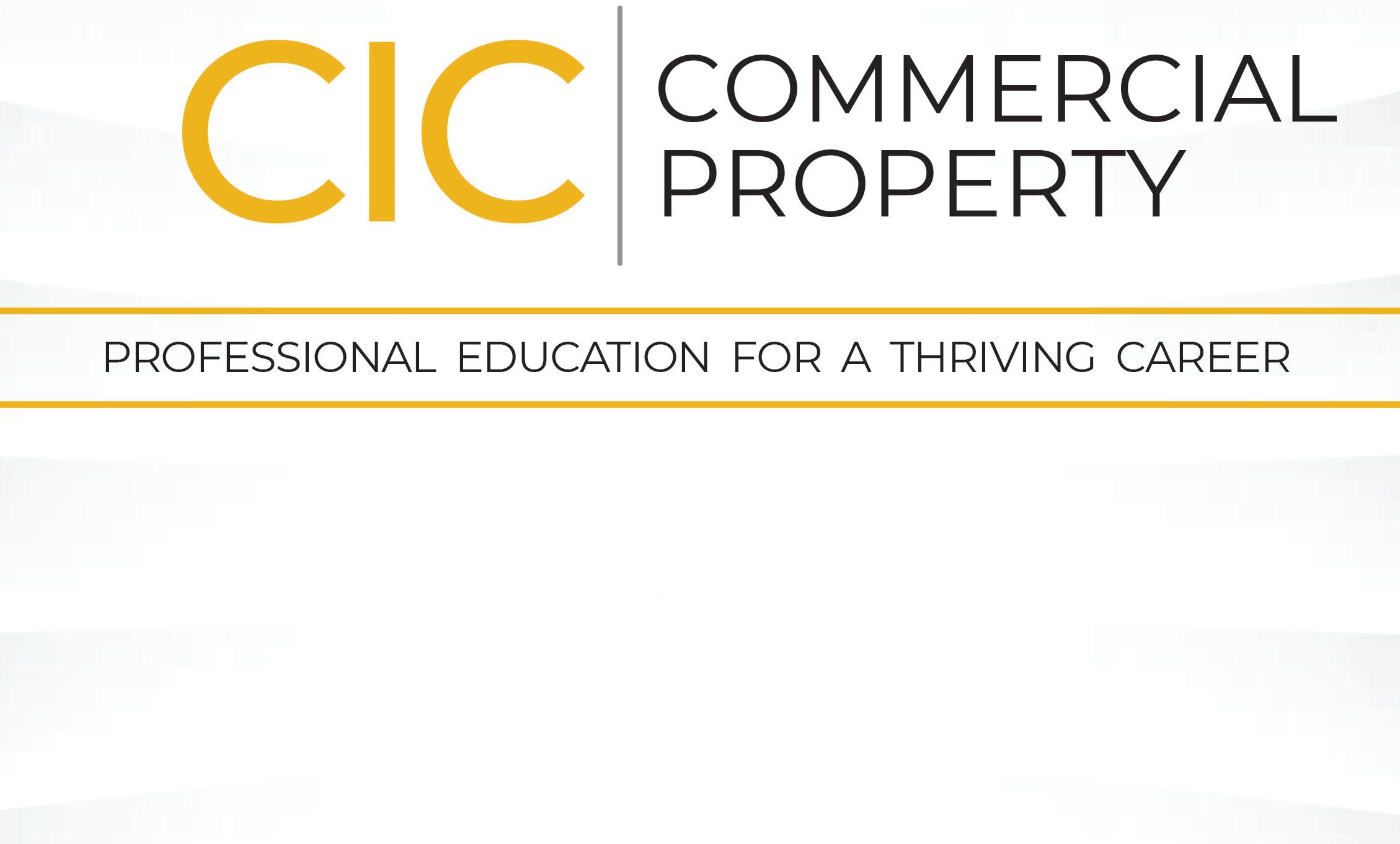
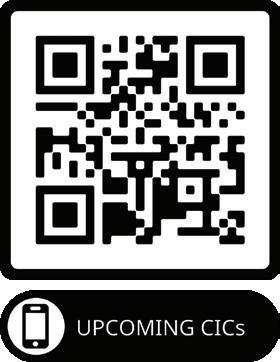
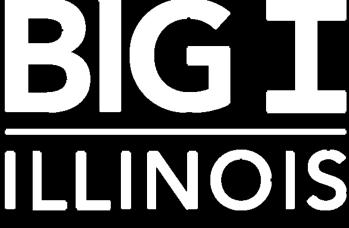


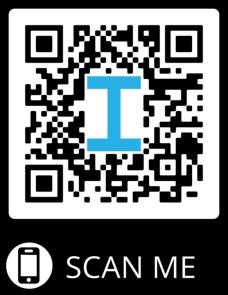
23. Are you looking for an exit strategy while still continuing to produce for a few years or are you ready to sell now? Paczolt Insurance would like to talk with you! We are an independent agency dating back to the 1970s that is located in the western suburbs. Our focus is on mid-to-small commercial accounts and personal lines. Our companies include EMC, Badger Mutual, Safeco, Progressive, and Travelers. We have the flexibility and capital to get a deal done. Contact:
Susan Troppito
Paczolt Insurance susan@piaigroup.com (708) 215-5202
20. Since 2004, Central Illinois Agents Group LLC has been providing independent agents with a variety of markets with contingency opportunities. Agents have availability to several markets that they may not be able to sustain or maintain on their own. We have markets for personal, commercial, agricultural and crop insurance lines. Let us help you get to the next level.
Visit www.ciagonline.com for contact information.
02. Forest Park/Oak Park agency for over 60 years, will meet your needs by providing space, markets, marketing & sales support, automation, merging with or purchasing your agency. Perpetuation/ Succession Plans, Buy-Sell Agreements also available. We have experienced, educated and dedicated staff for you and your clients. Have access to our numerous companies, office services and many other resources. Please look closely at us- we are an agency you want to do business with! We’ve done it before, we know how- we make it easy! Visit our website at forestagency.com/agents.html, or call for a confidential discussion and a list of Agency benefits.
Dan Browne will provide an agency evaluation/appraisal at little cost to you. Please call:
Dan Browne or Cathy Hall Forest Insurance/Relation Insurance Services (708) 383-9000
www.forestinsured.com/mergers-acquisitions
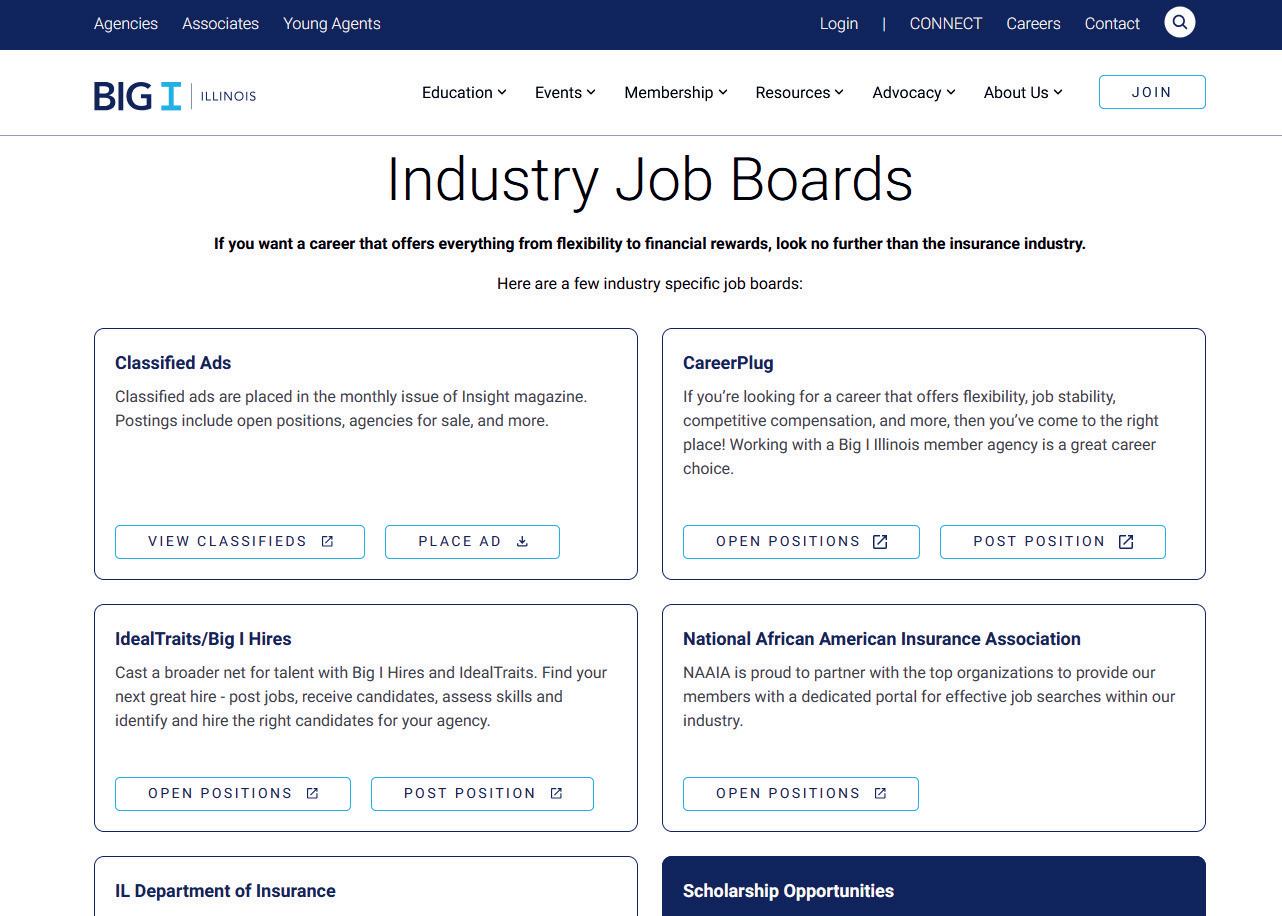

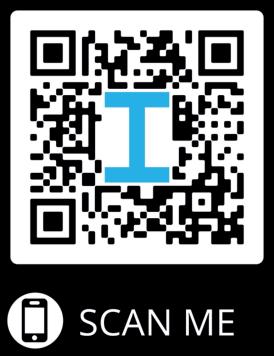


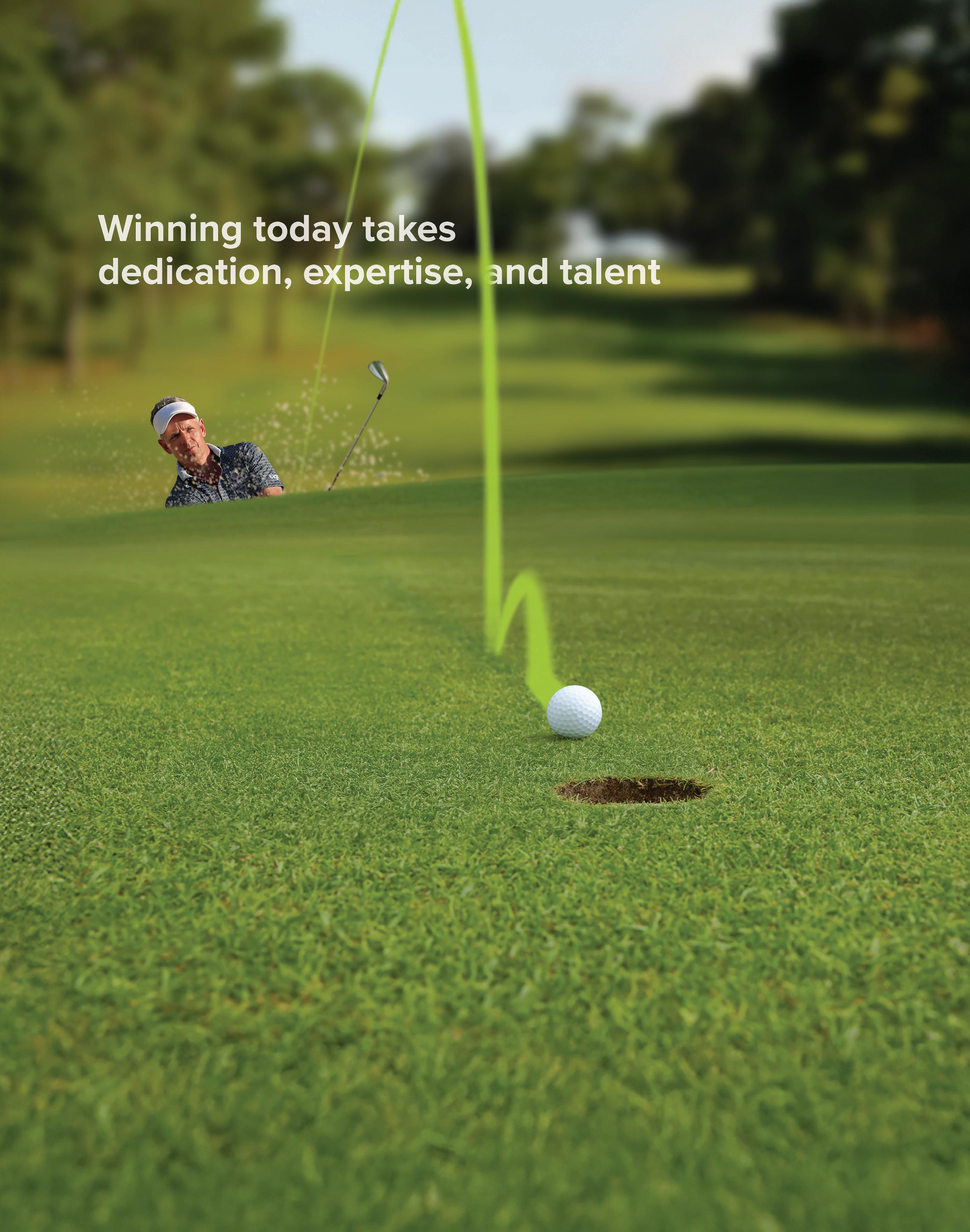
Up-and-down

The best scramblers on tour today achieve a 67% conversion rate.
Luke Donald knows the game has evolved. As a winning Ryder Cup Captain, he chooses his players carefully.
At United Risk, we unite elite capability backed by proven results. A magnet for apex underwriting professionals committed to free enterprise and success.